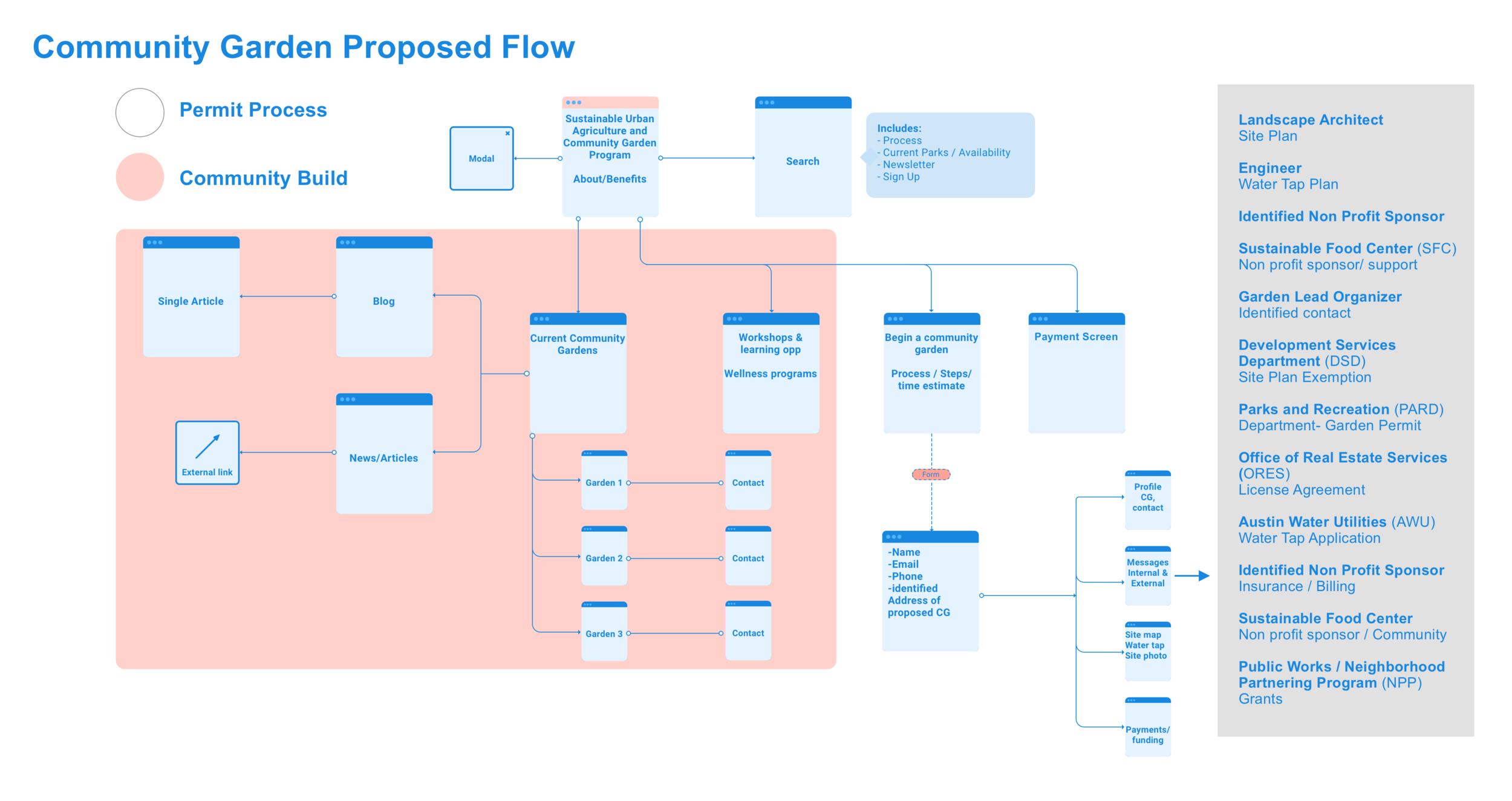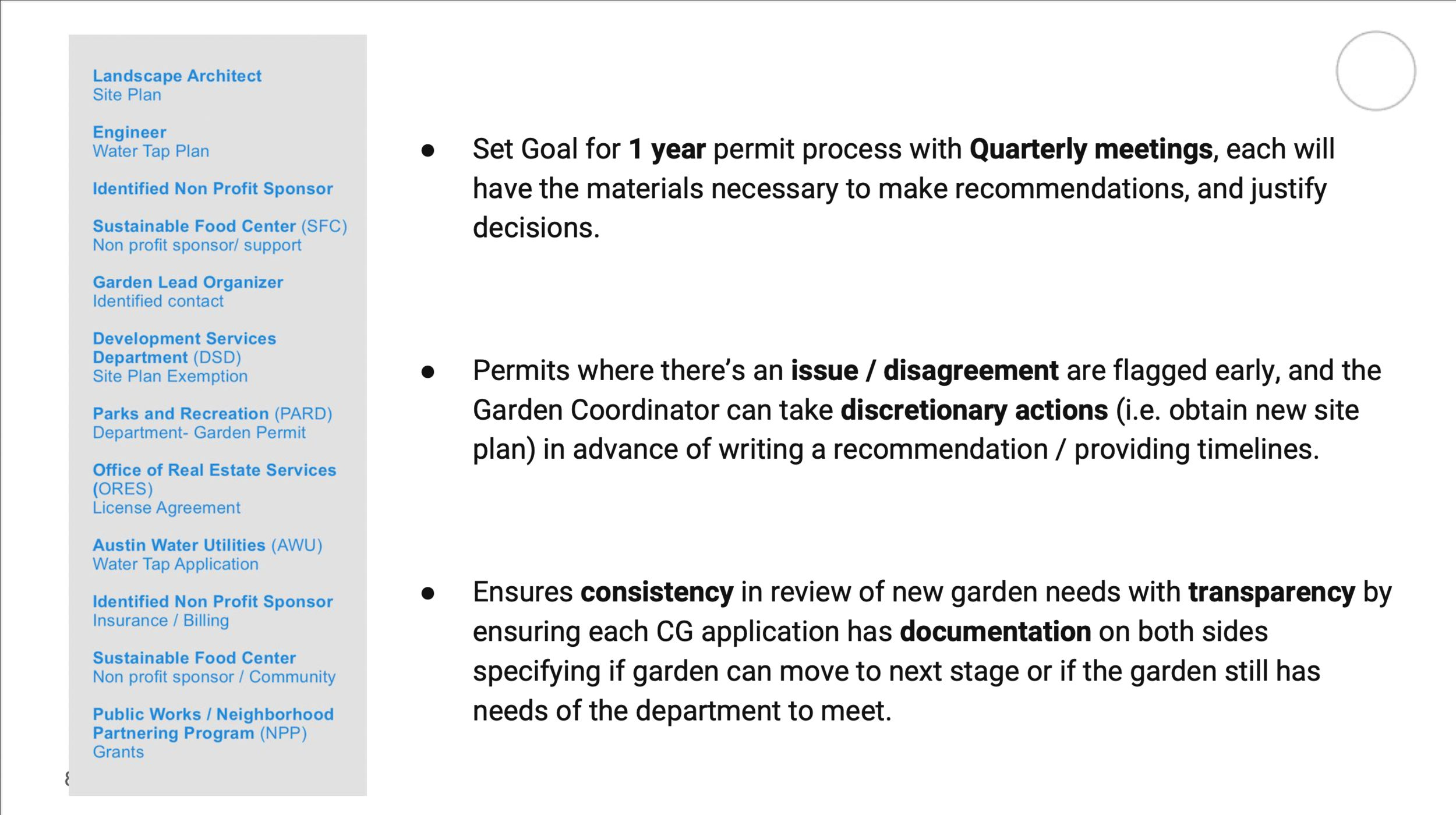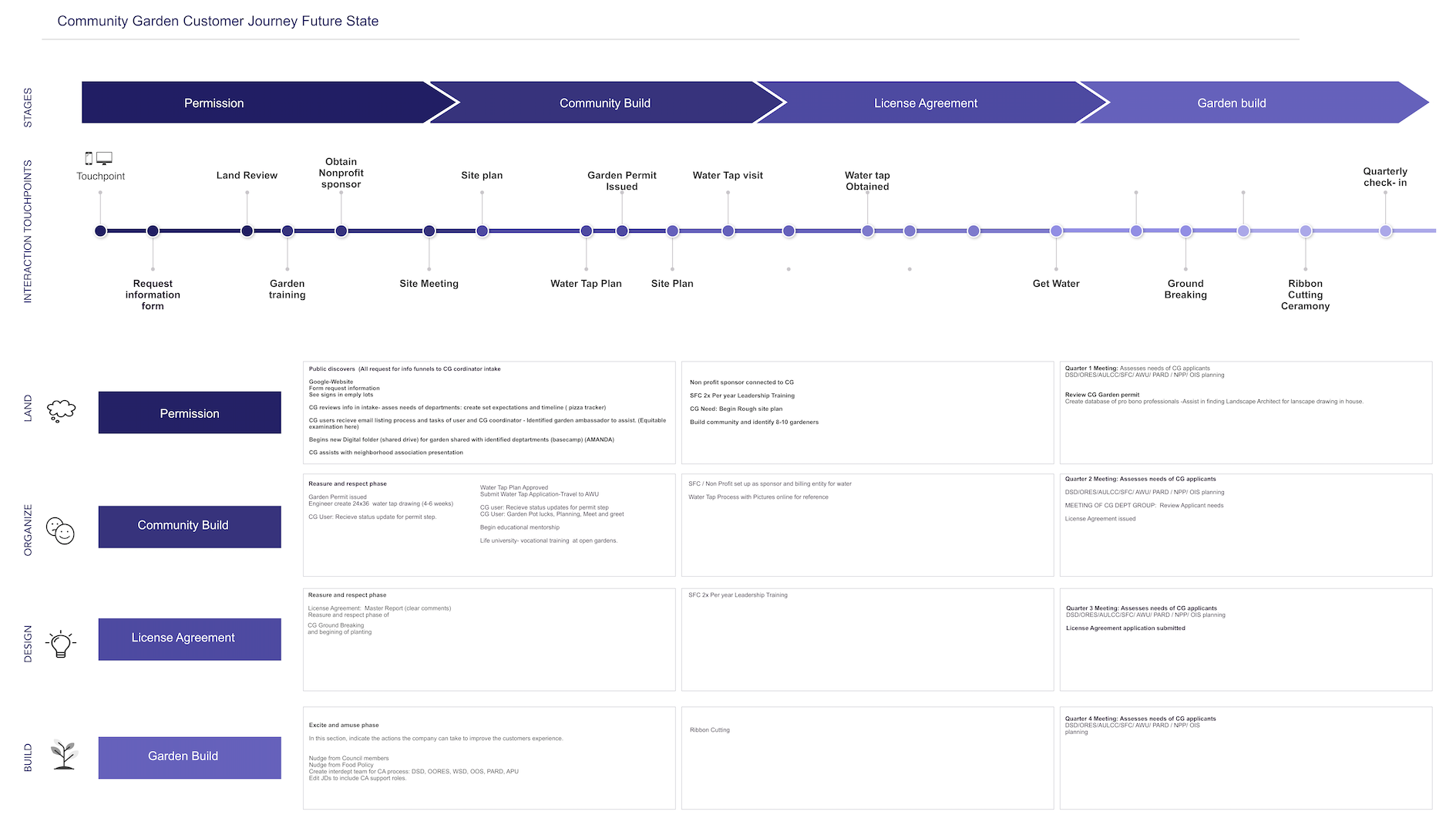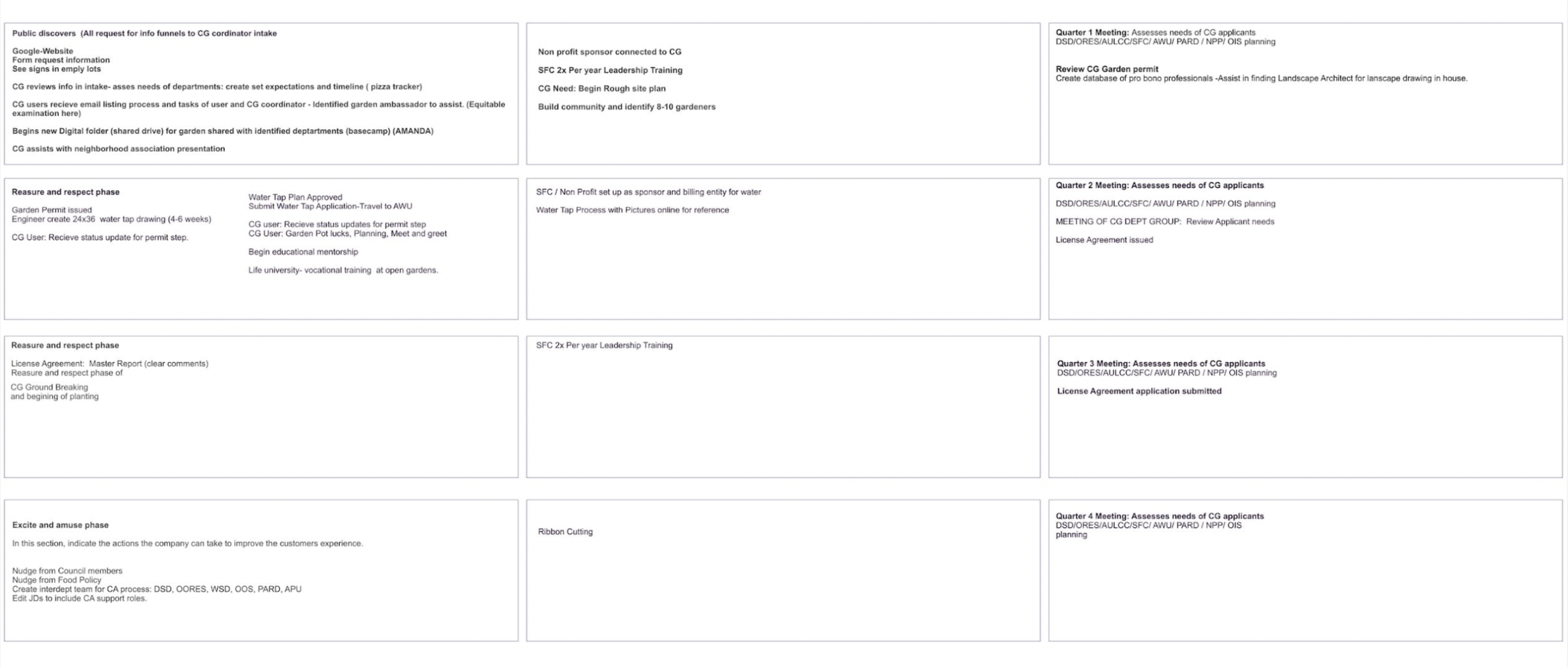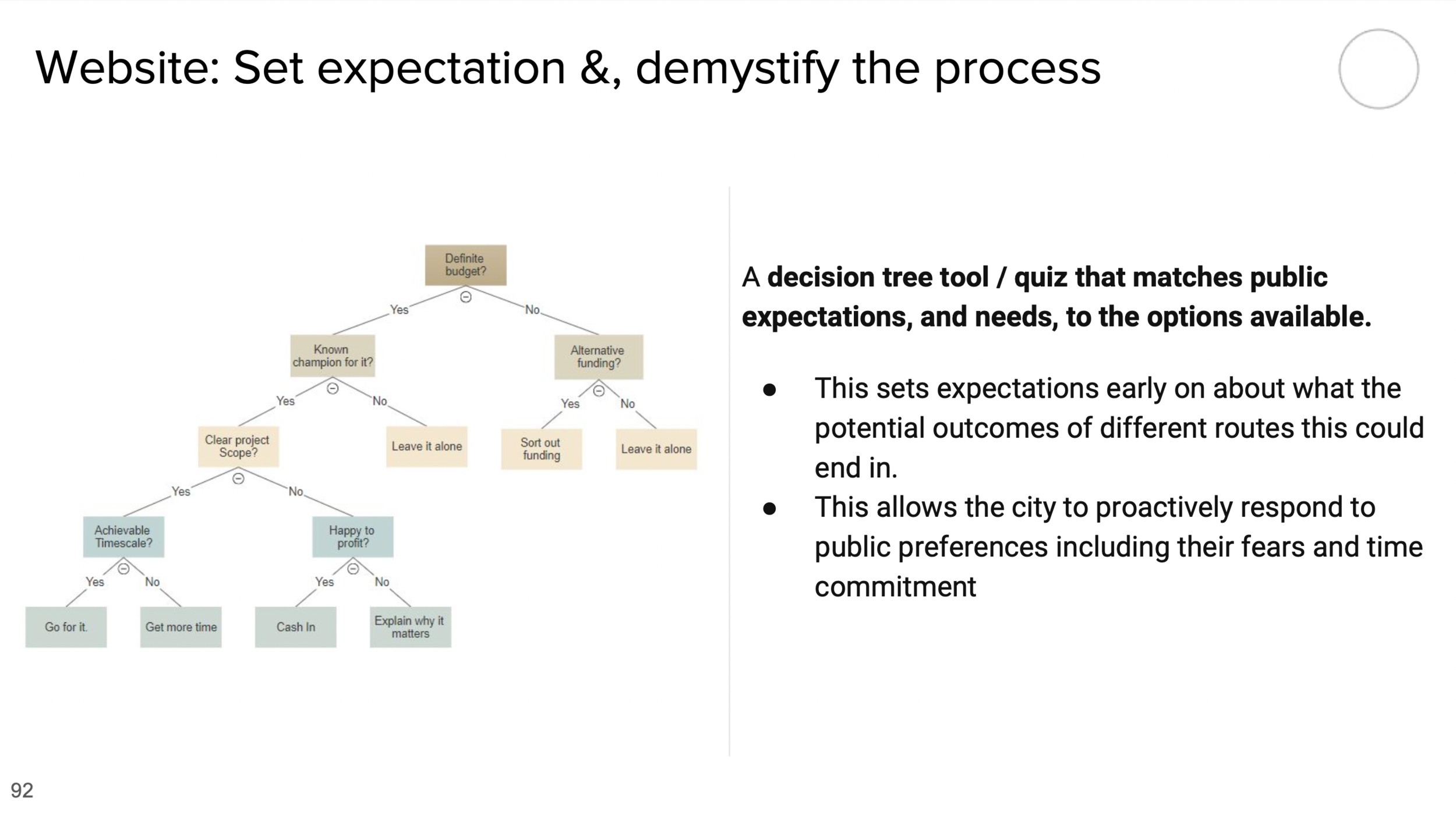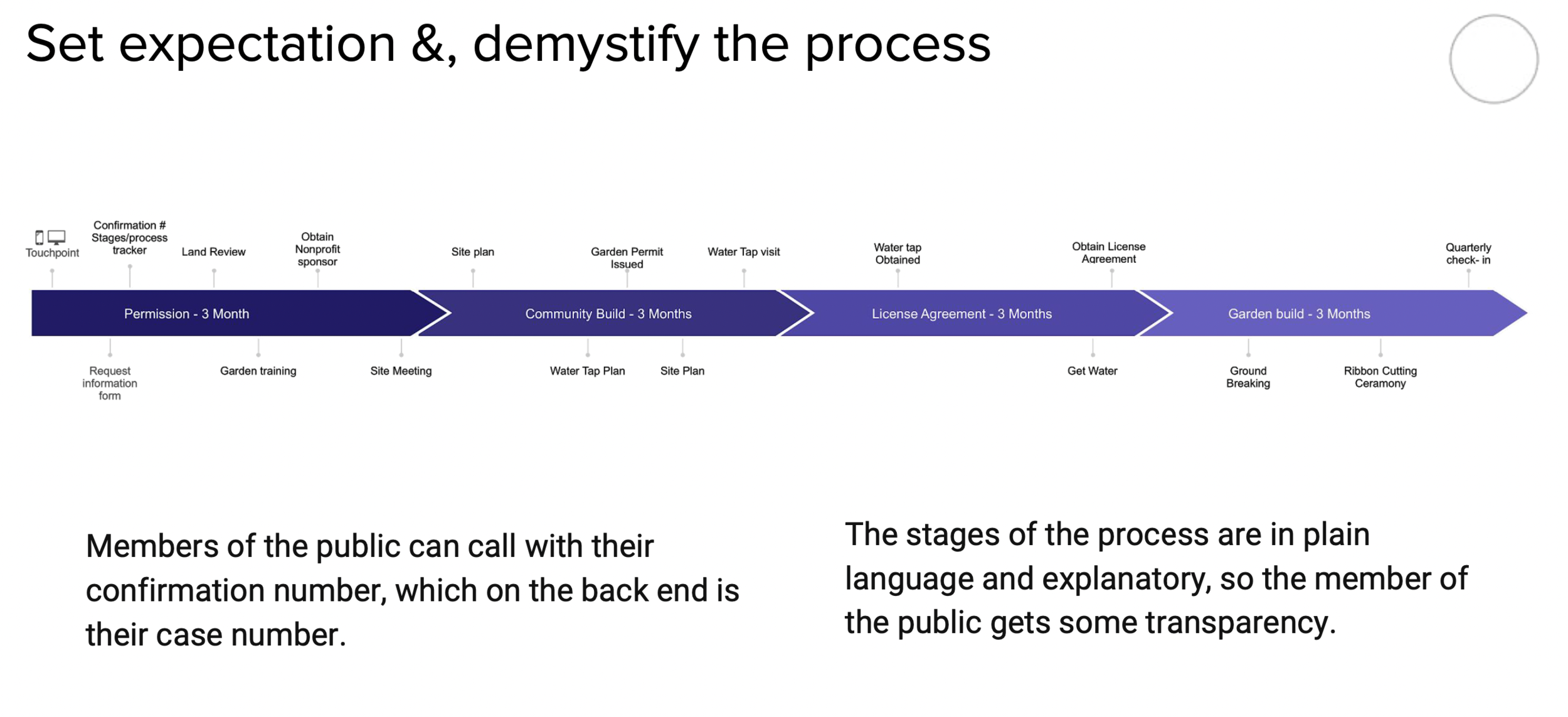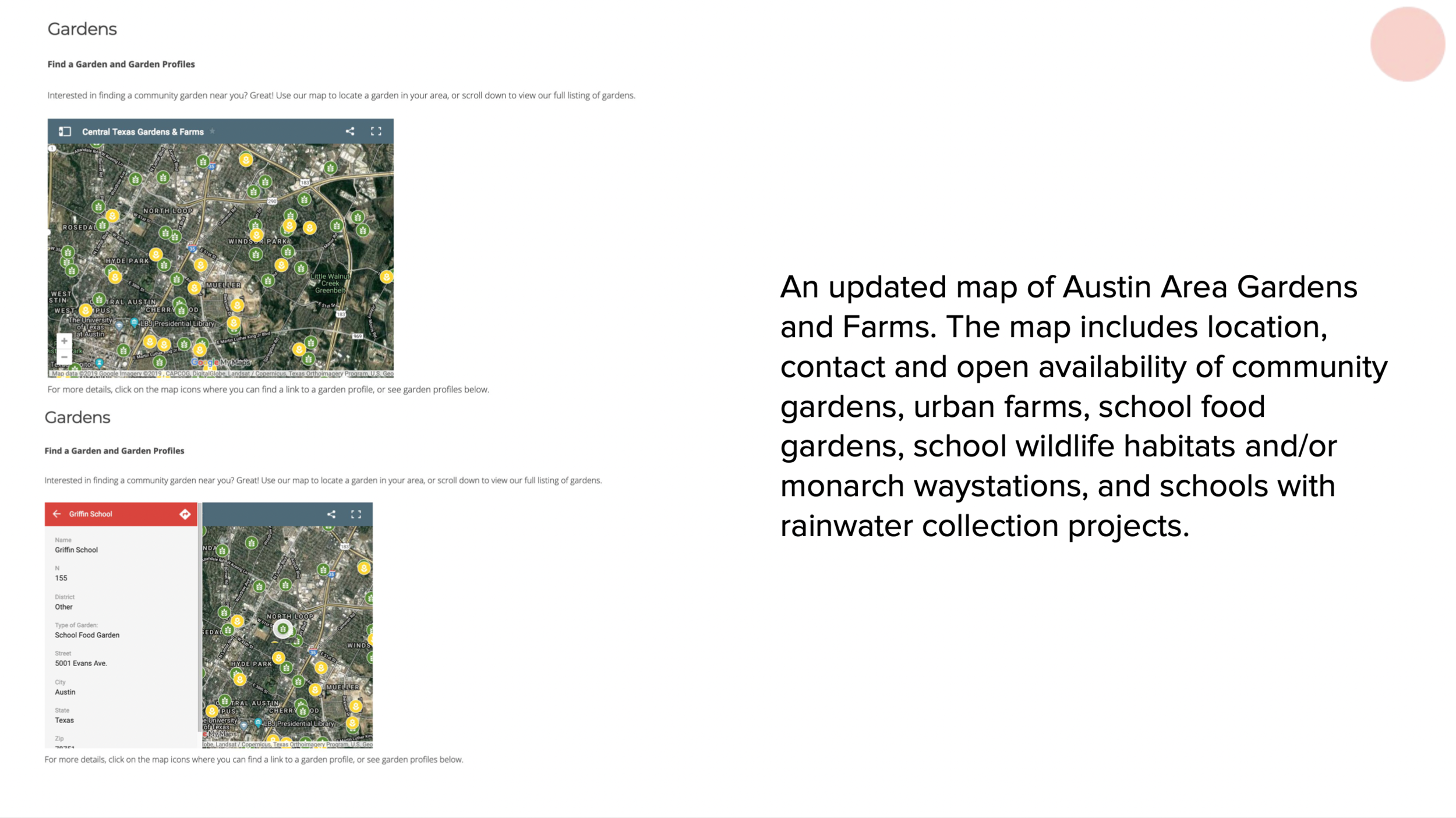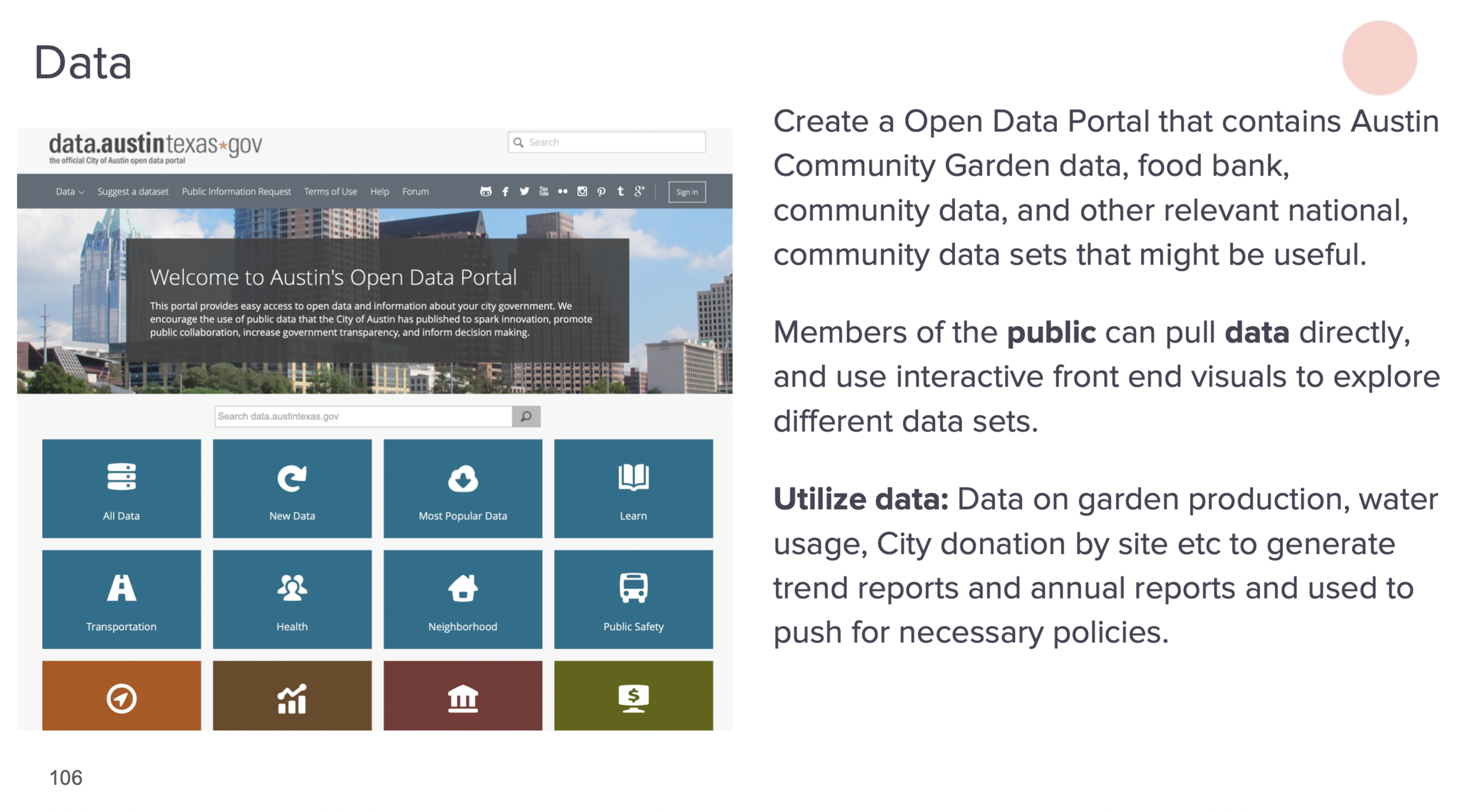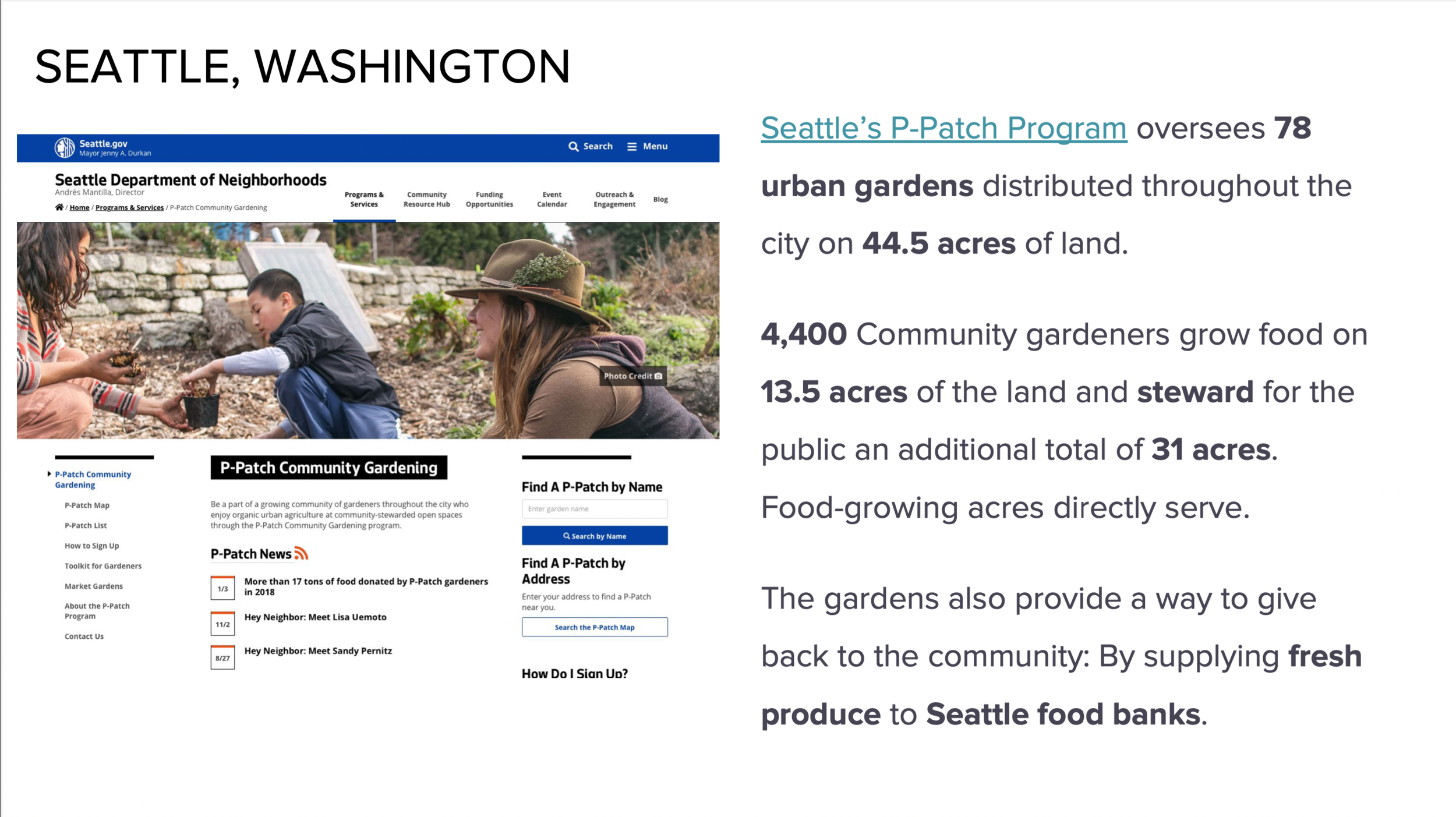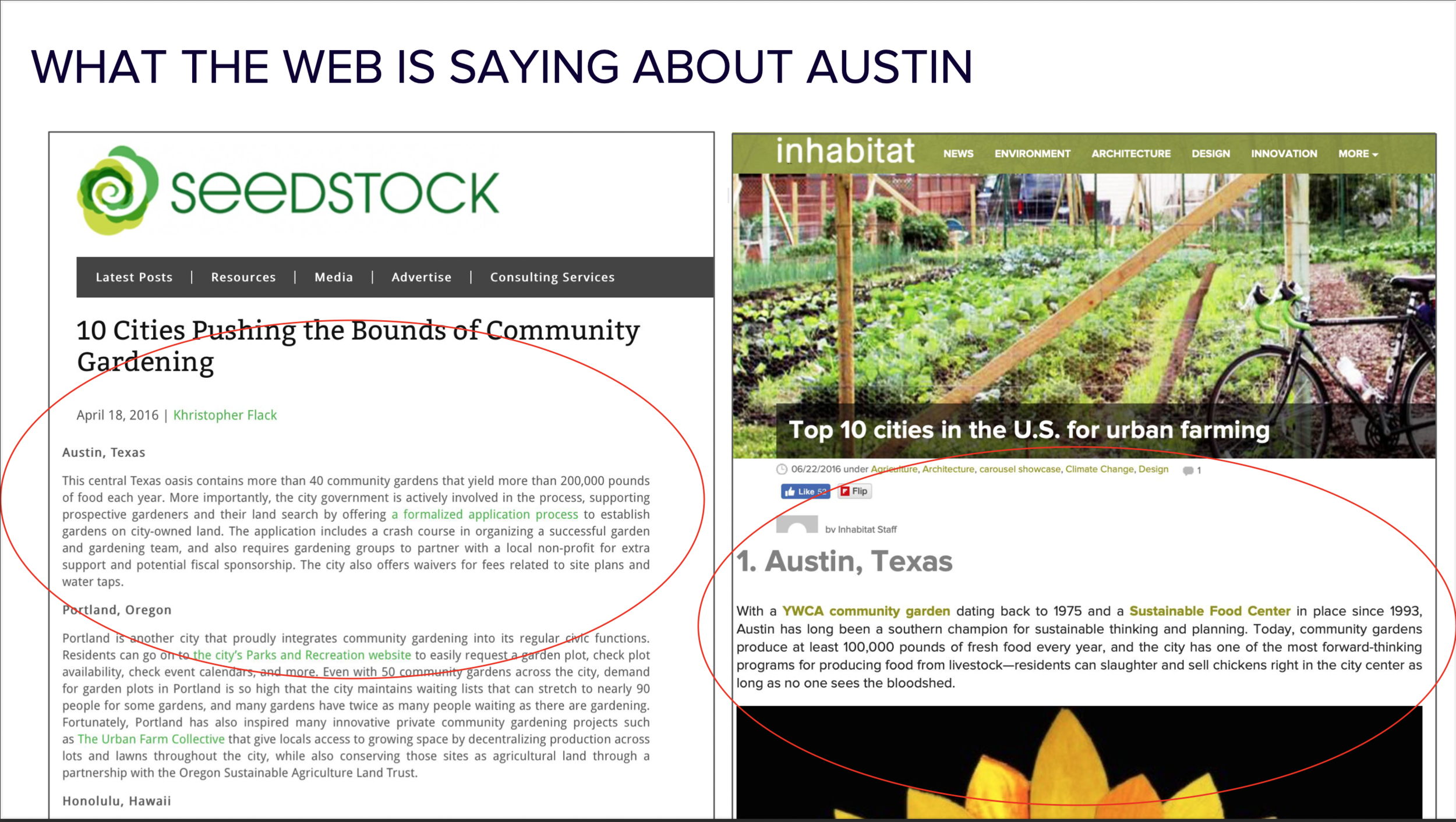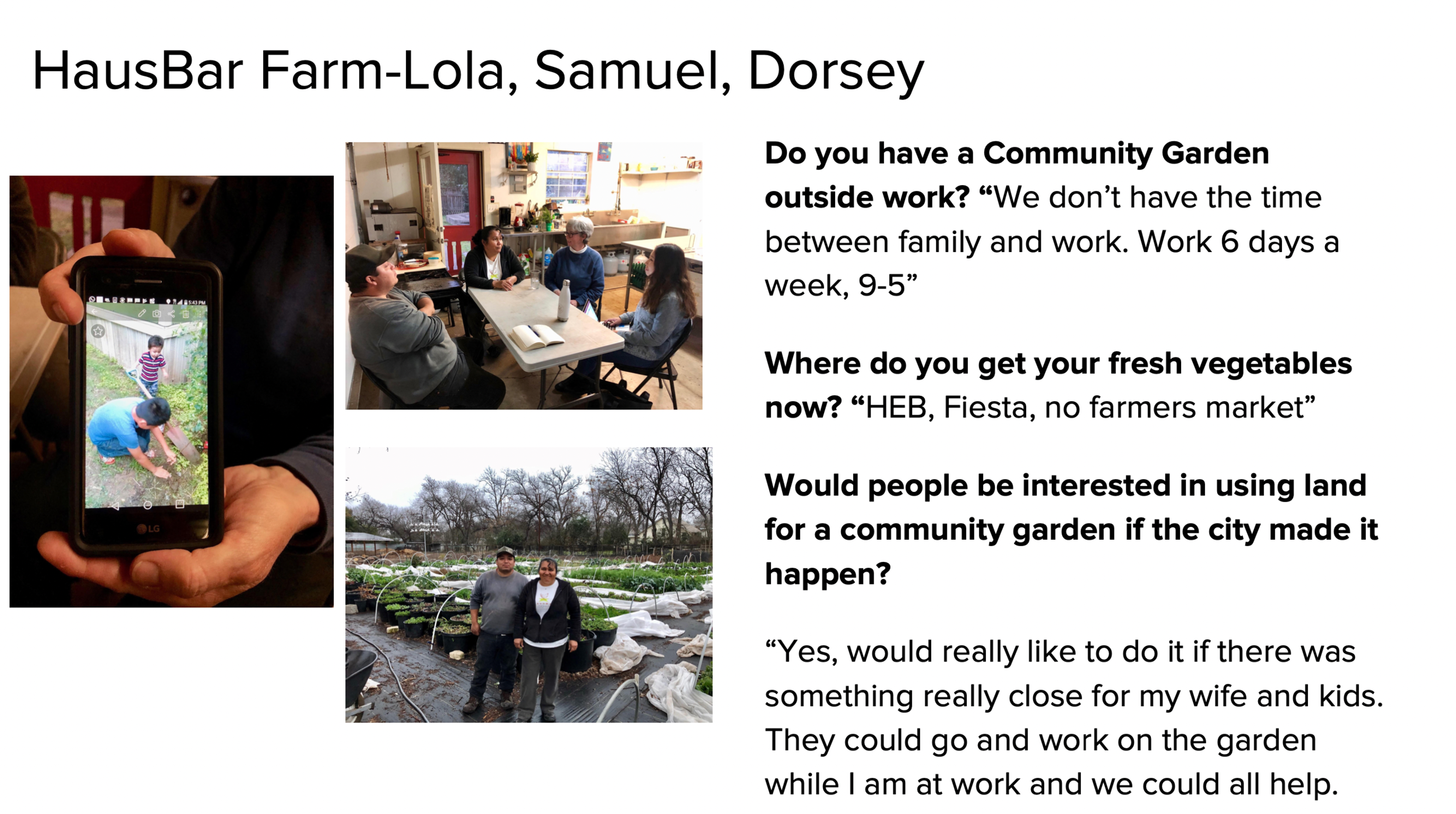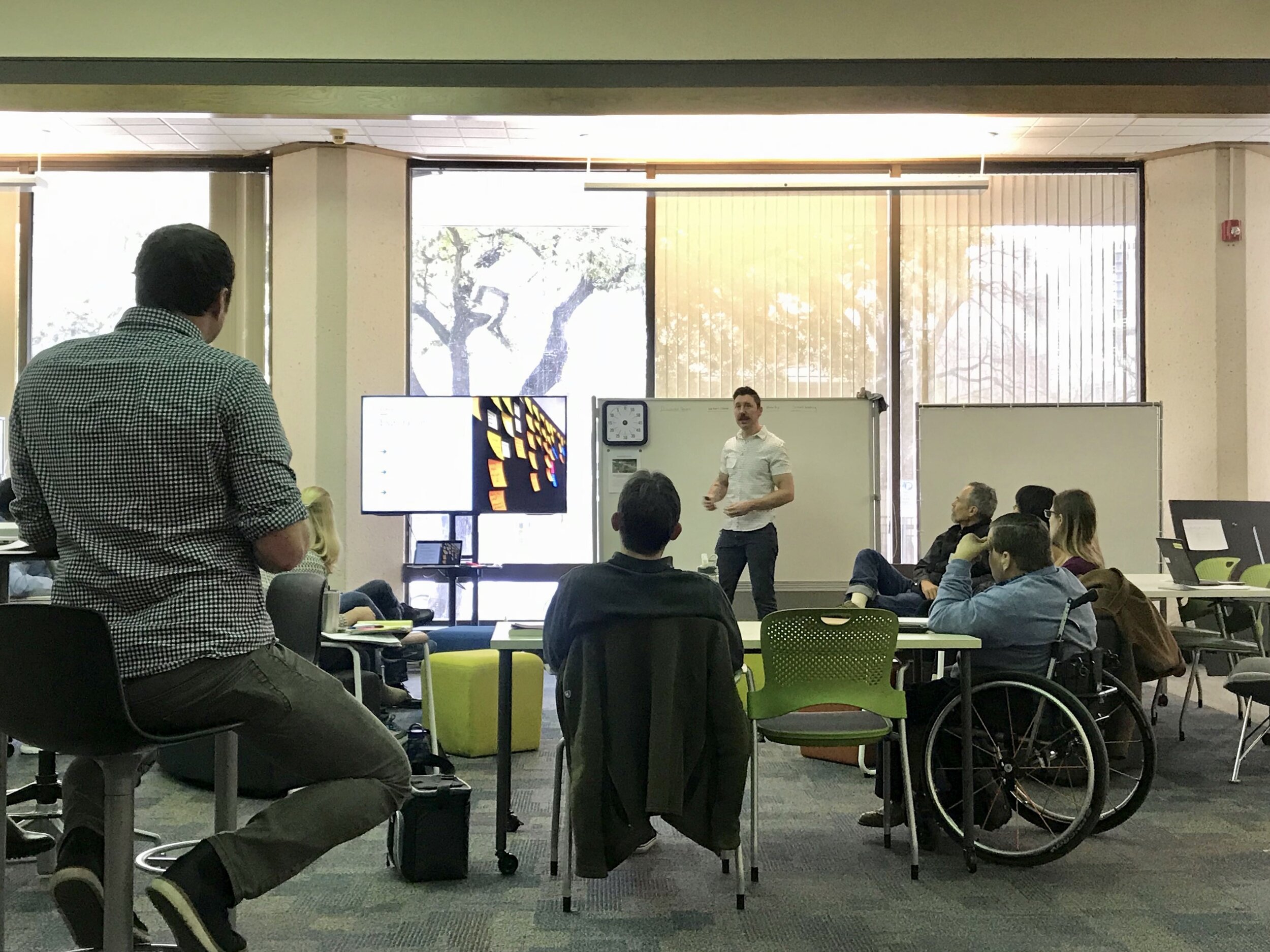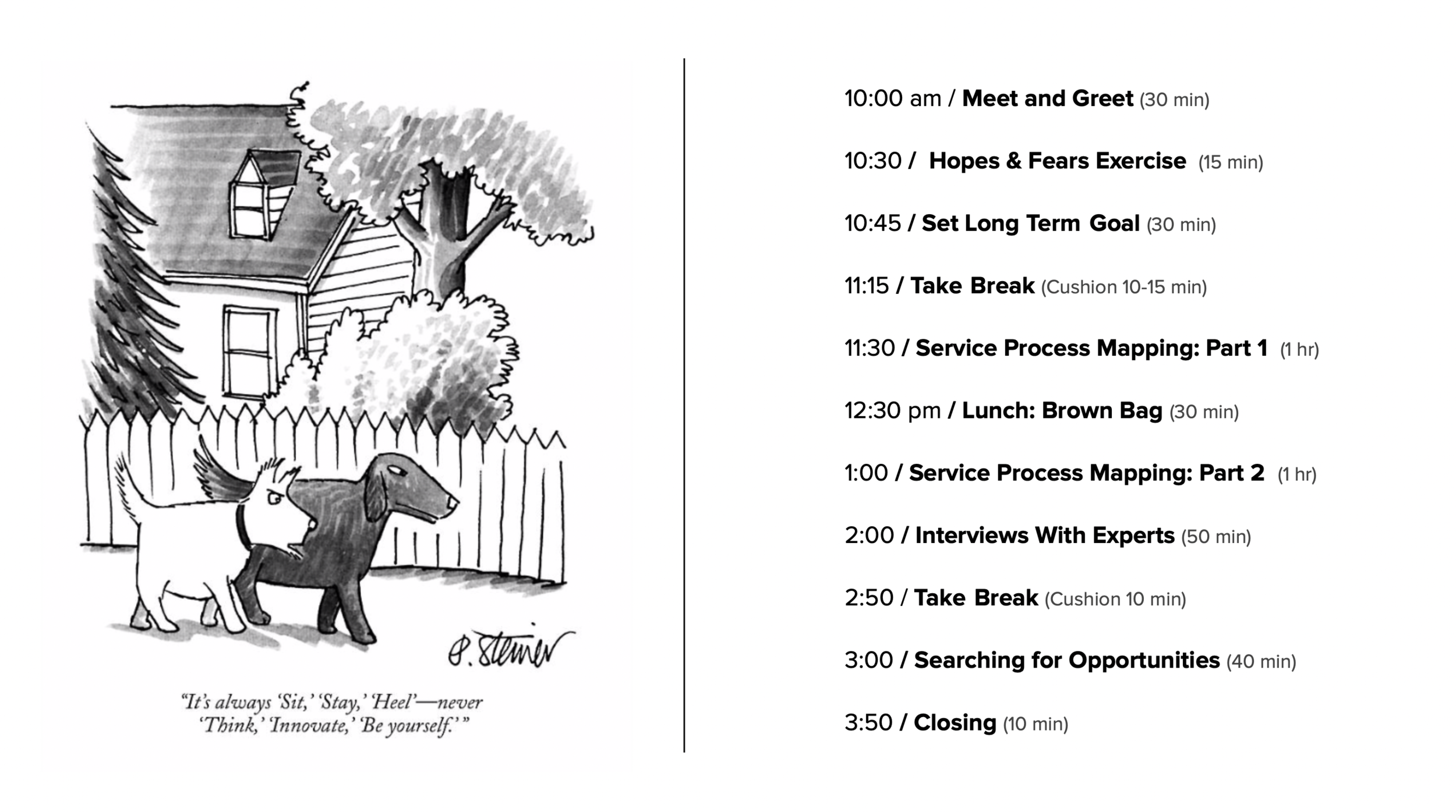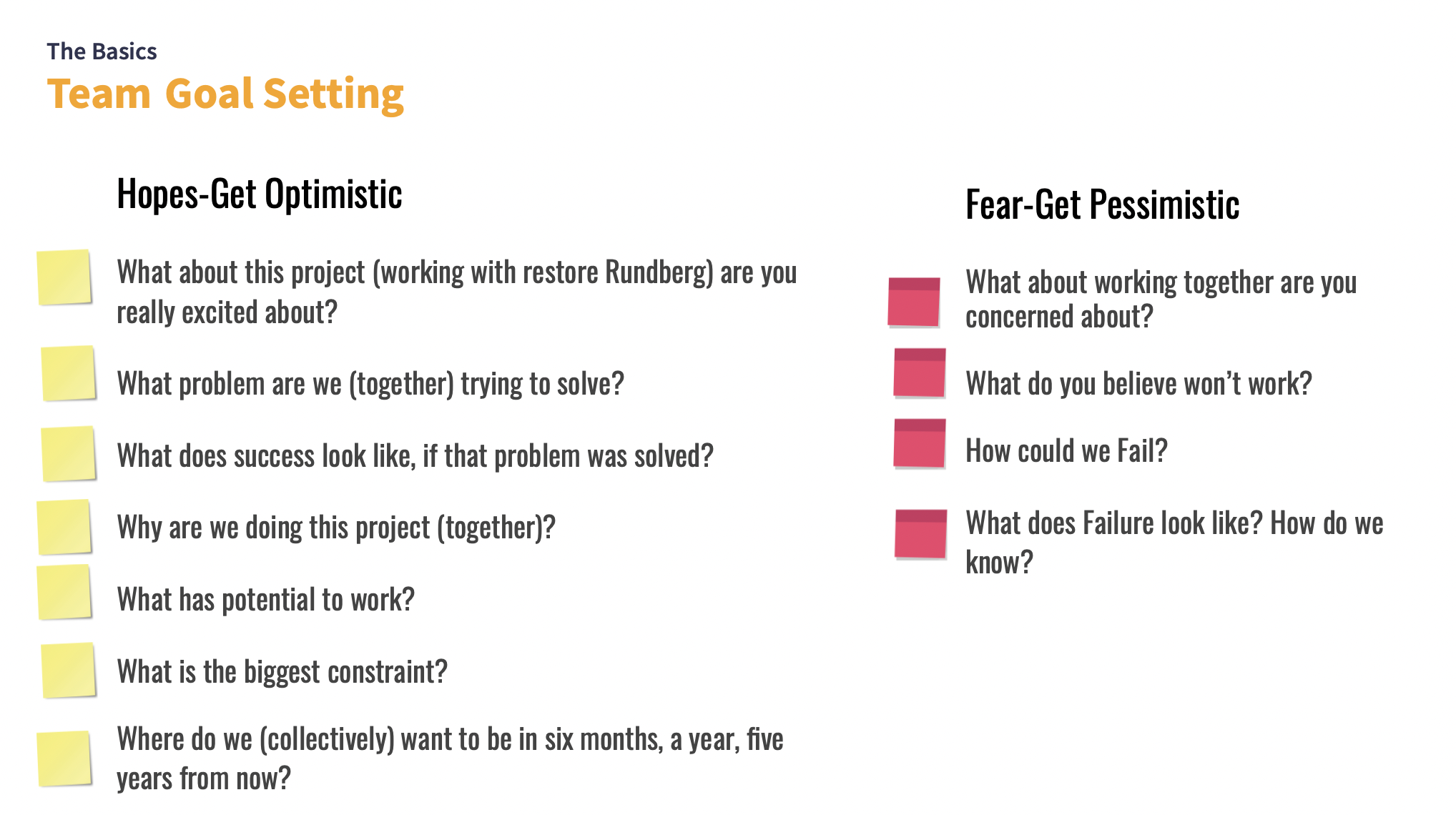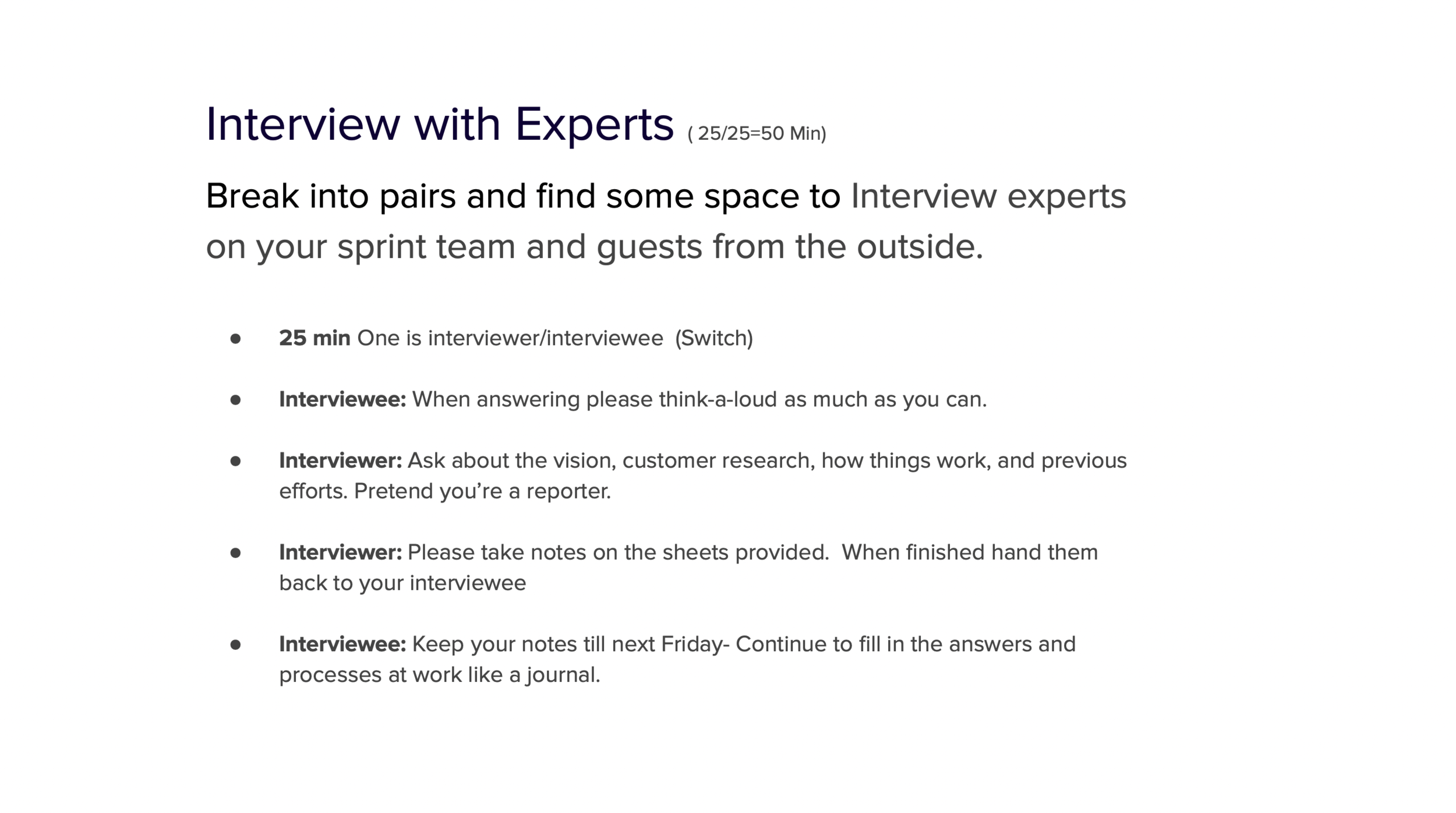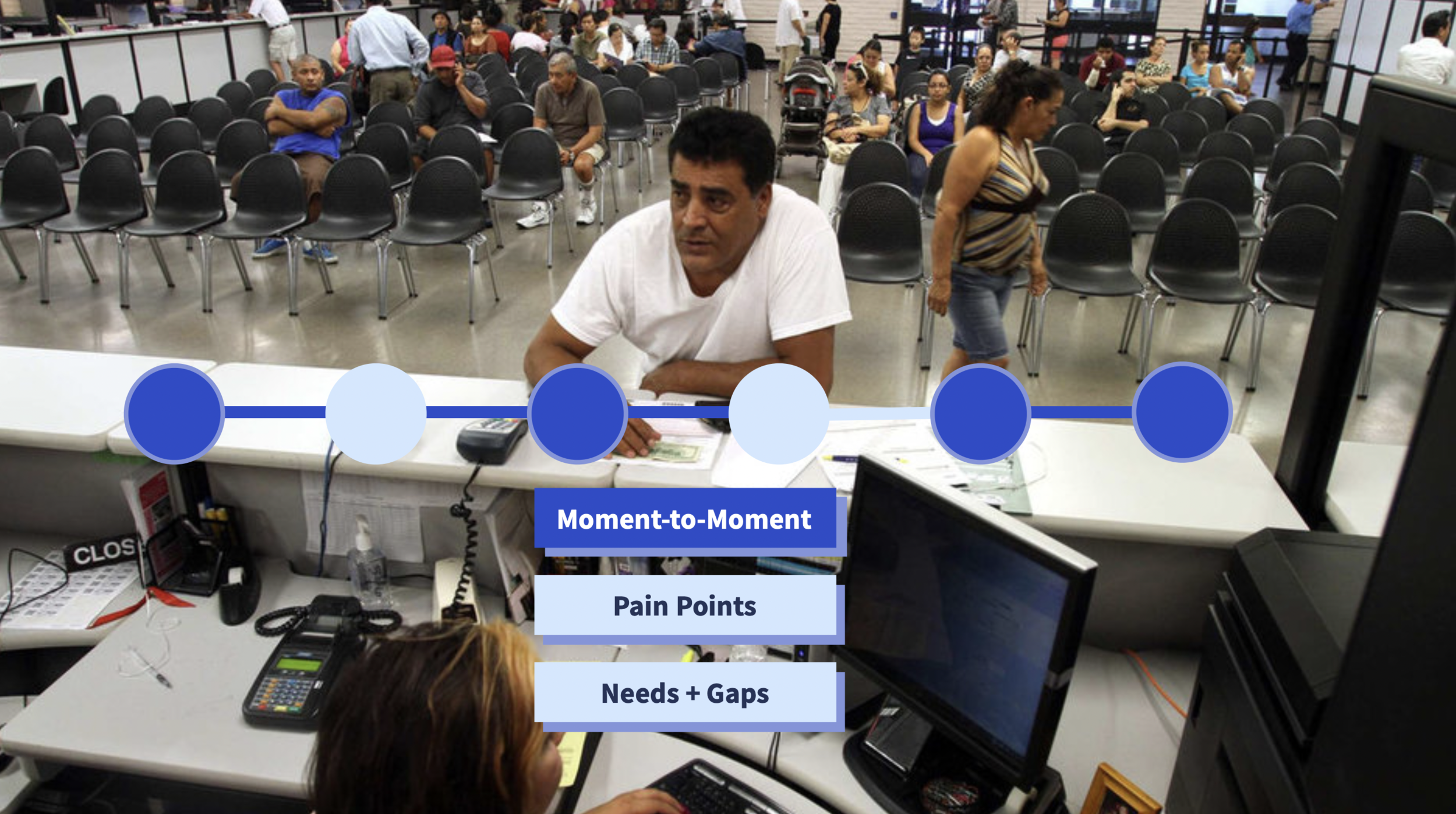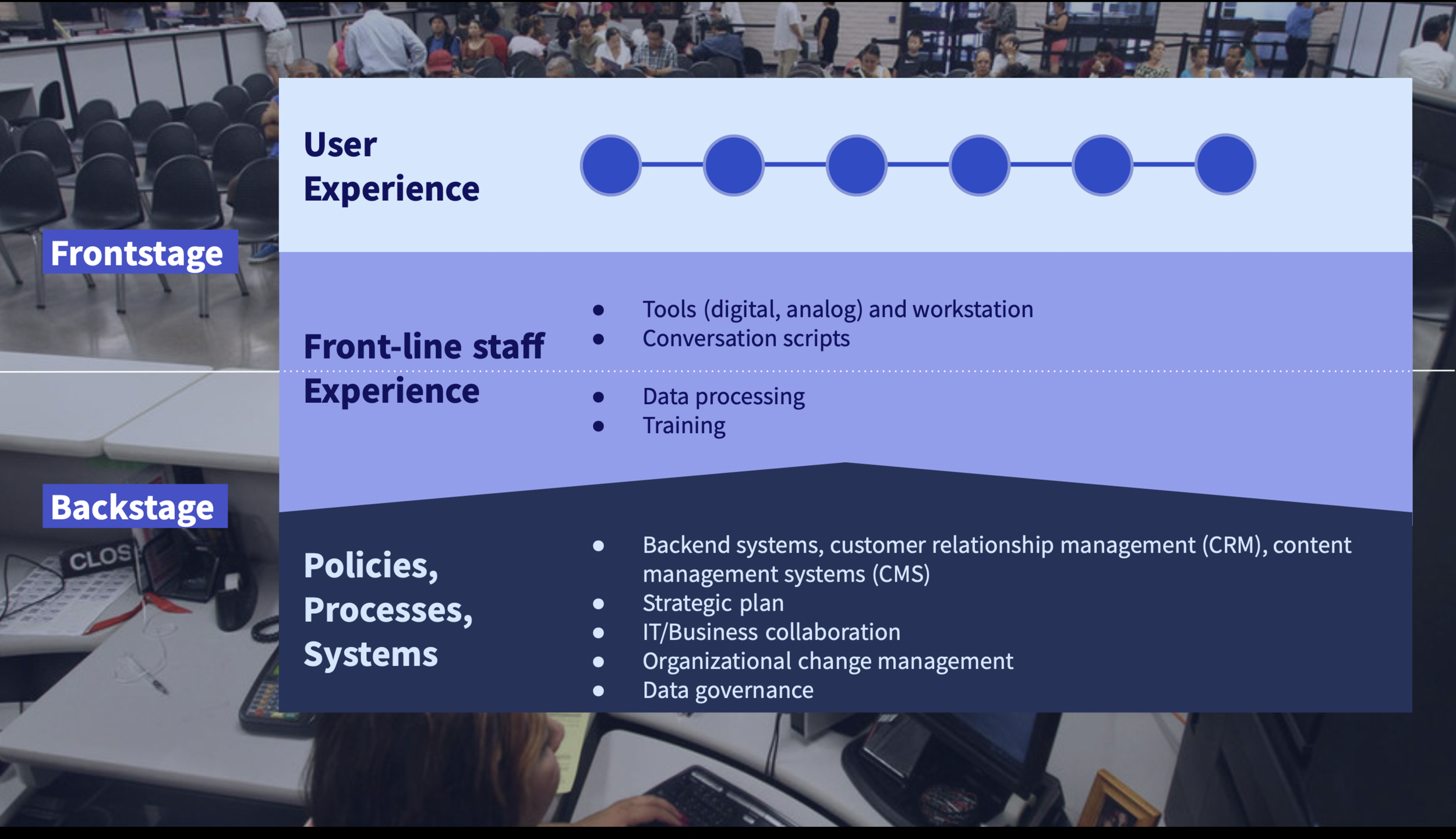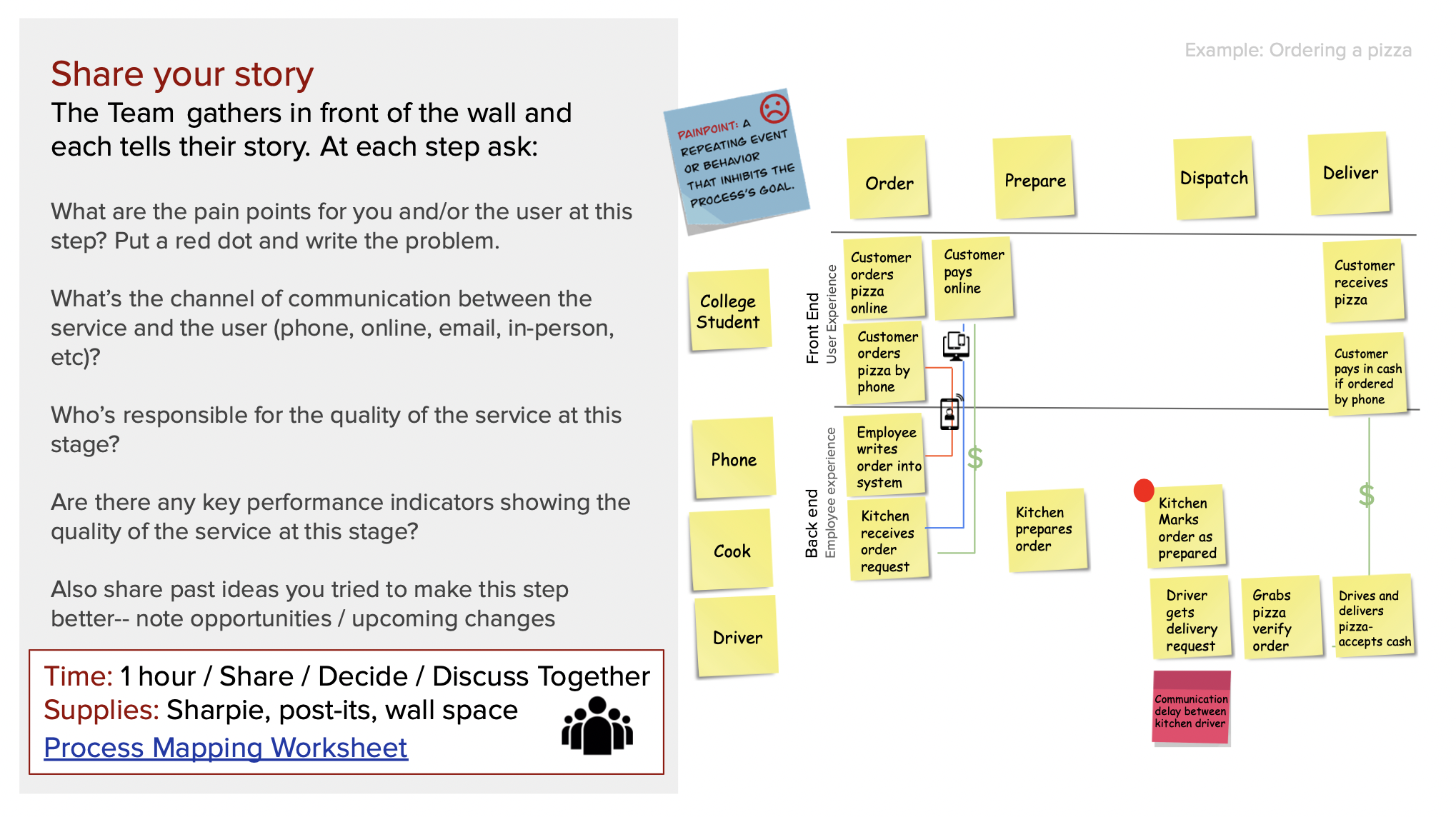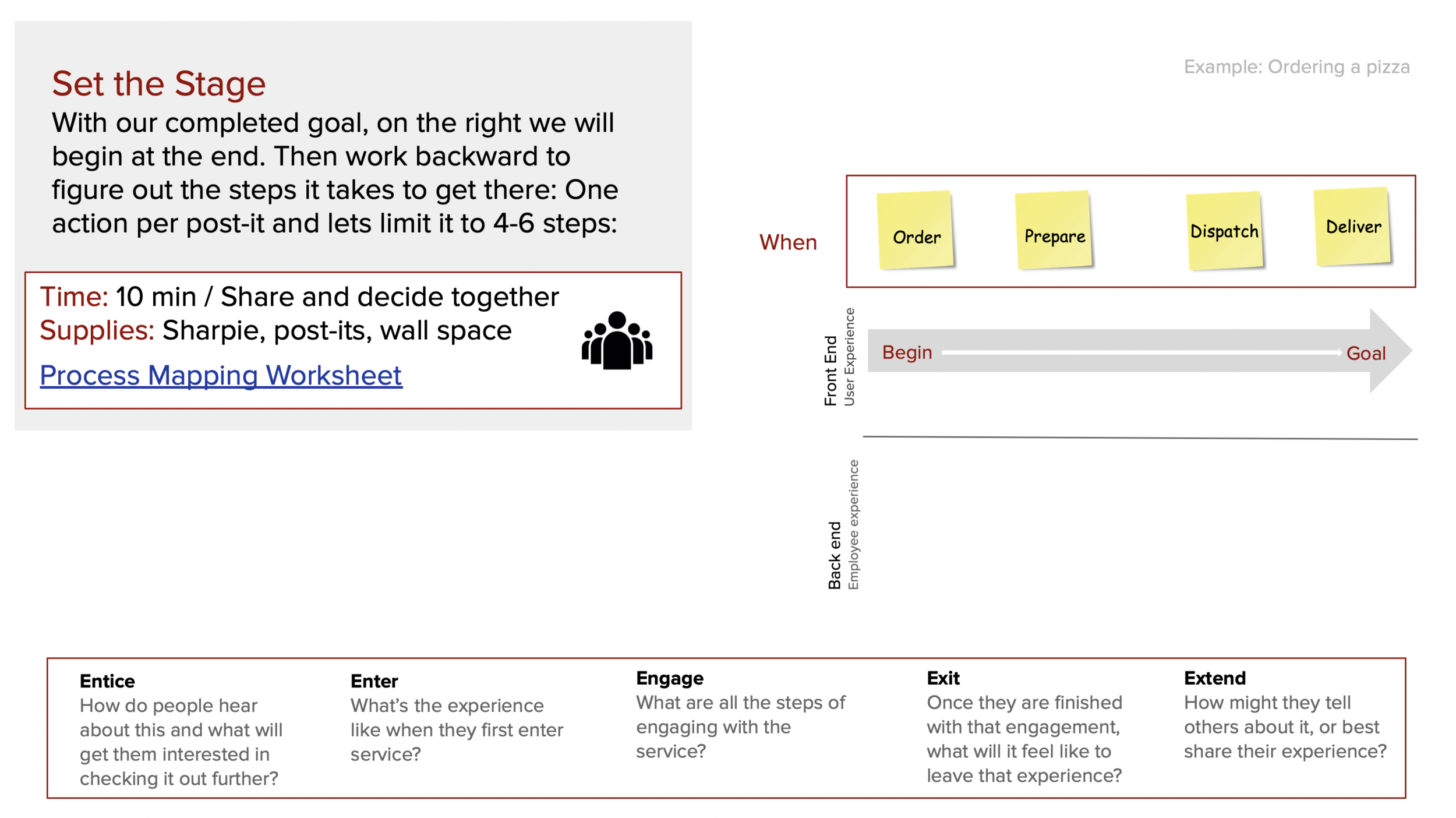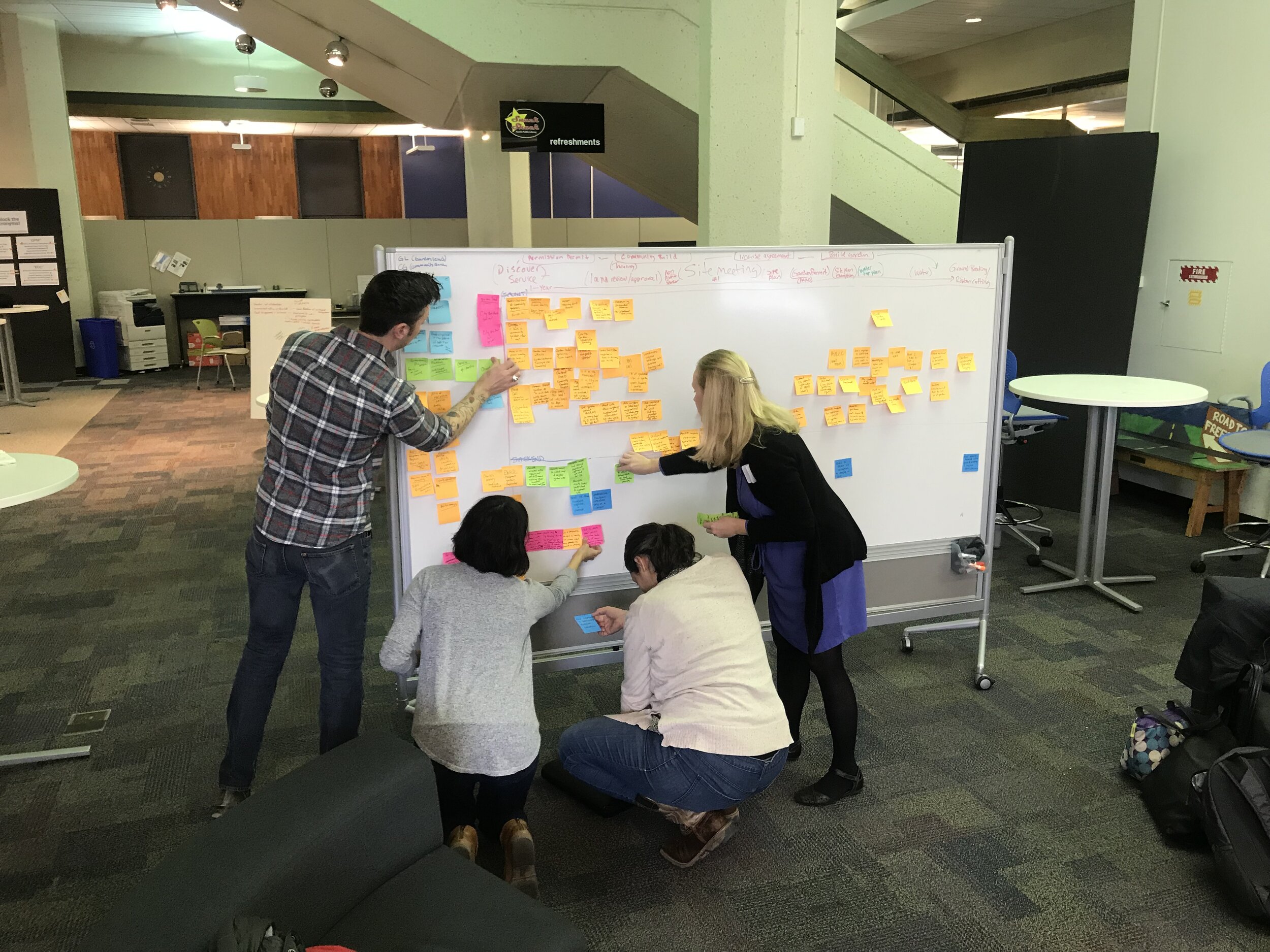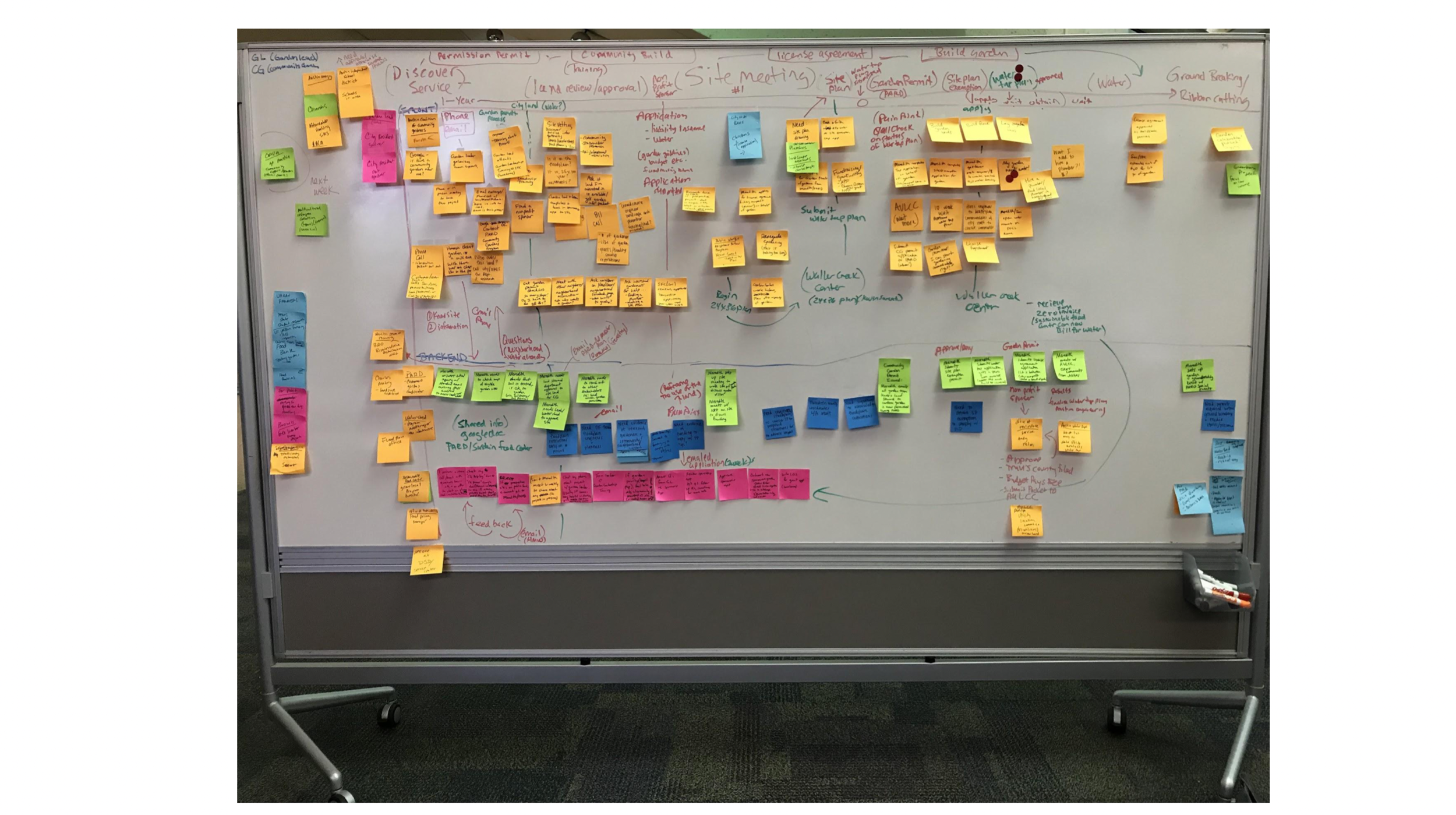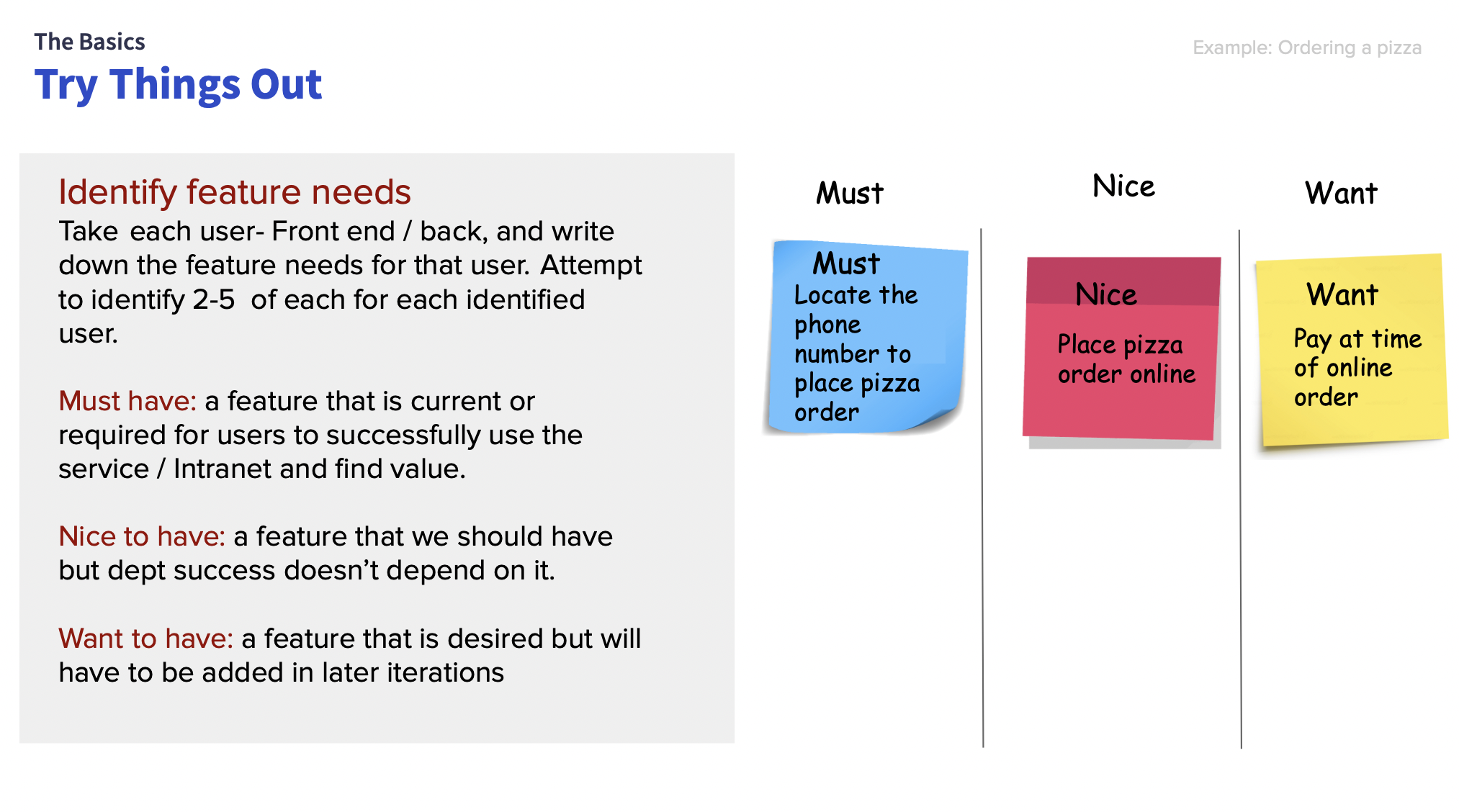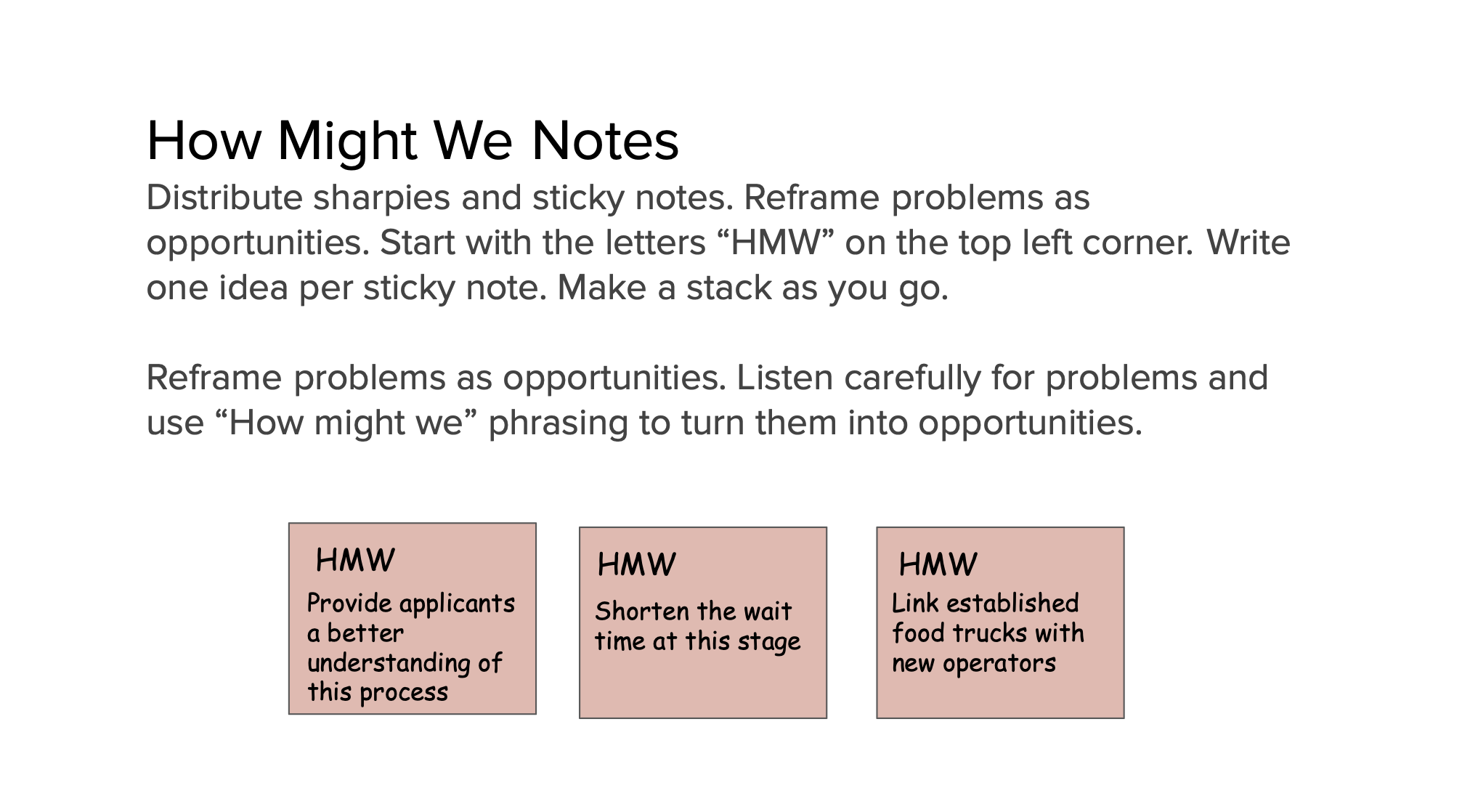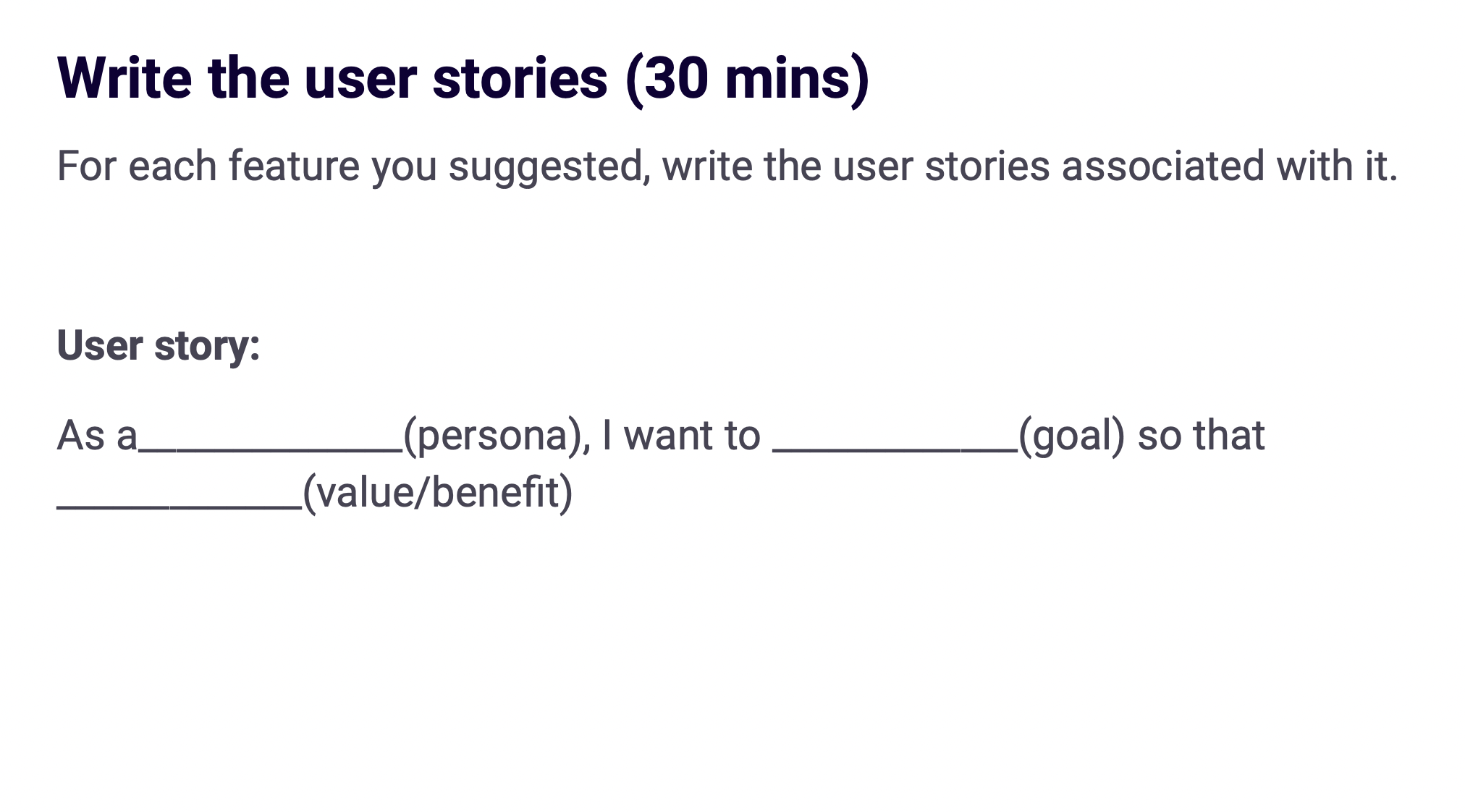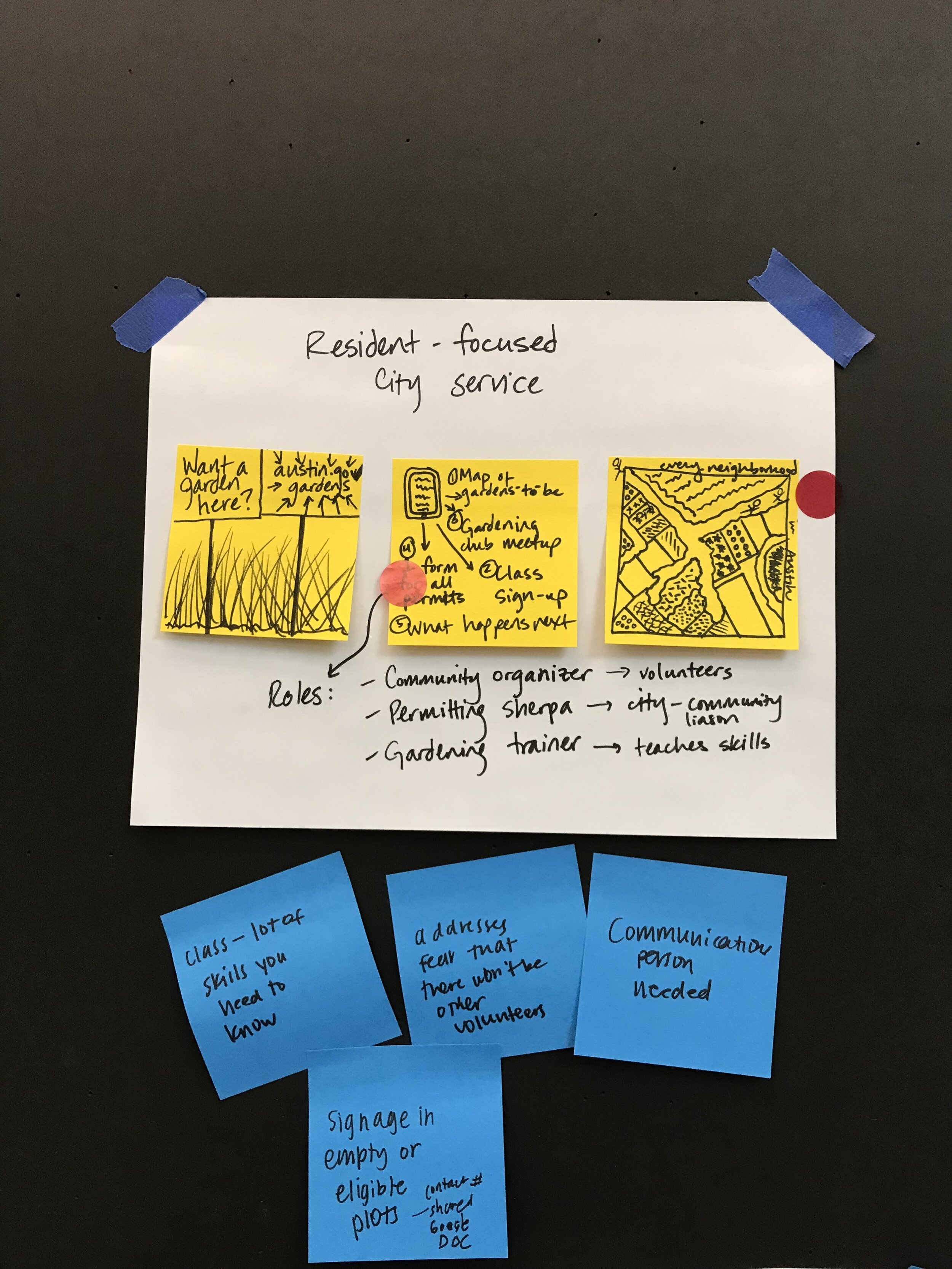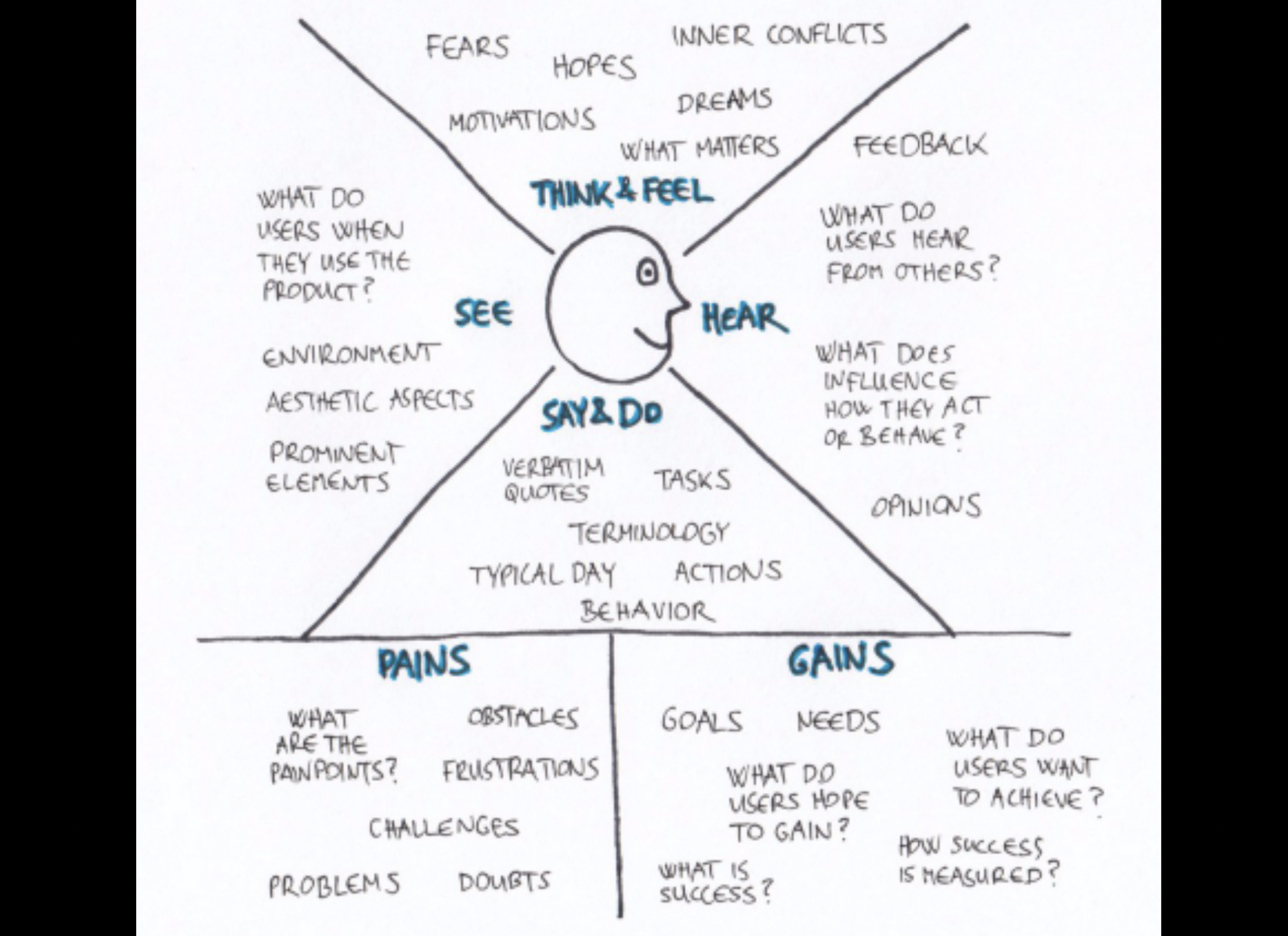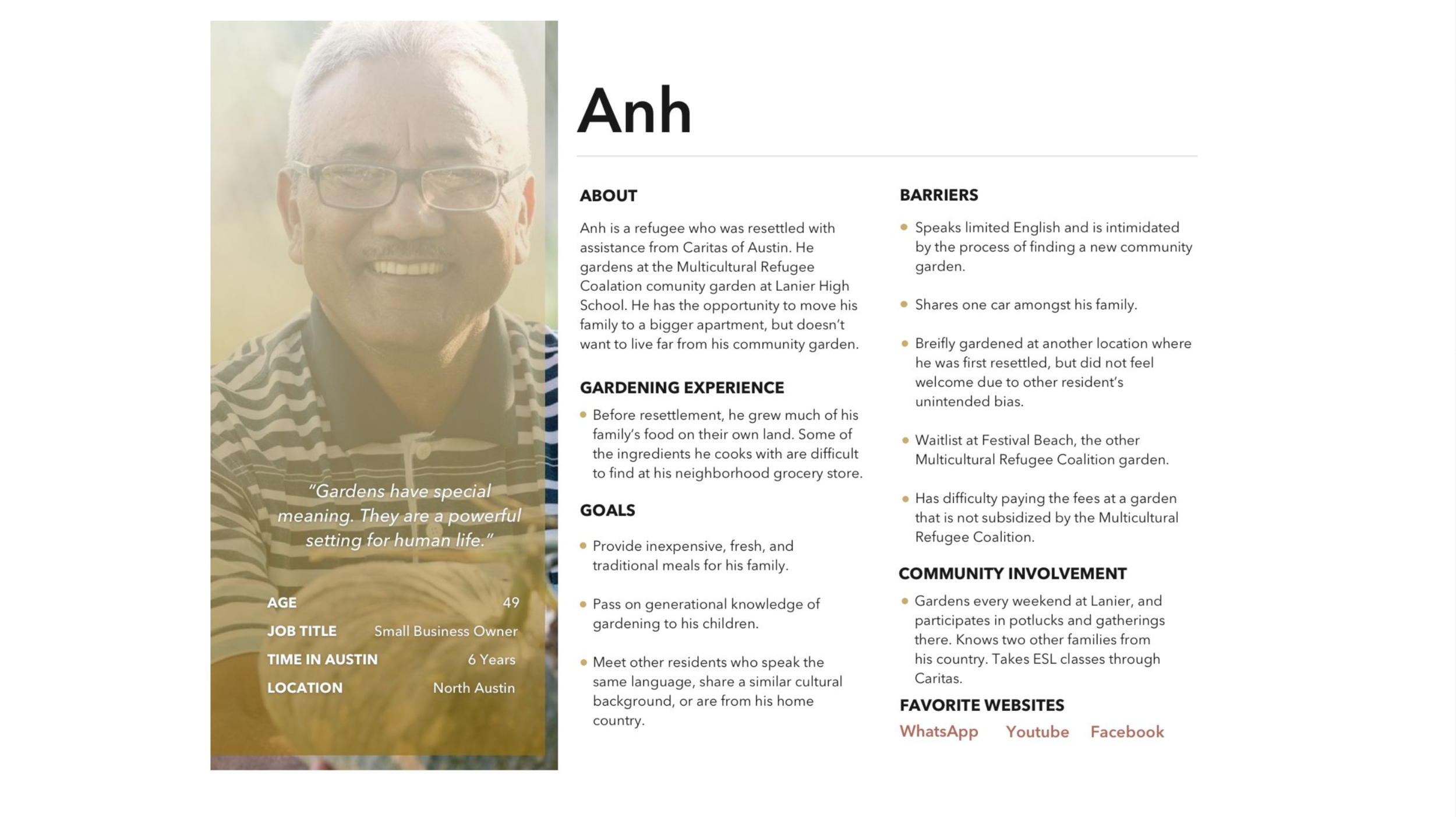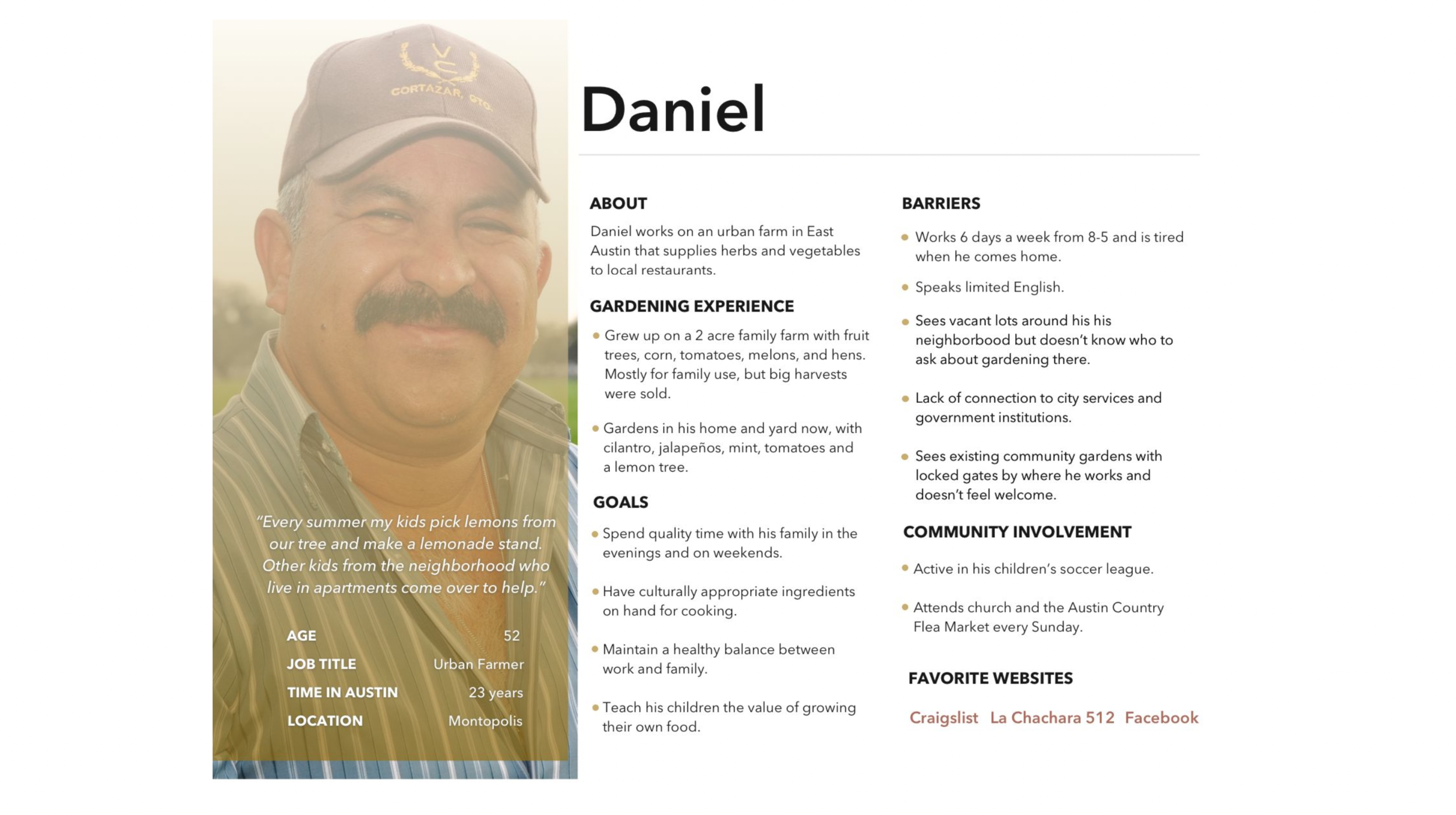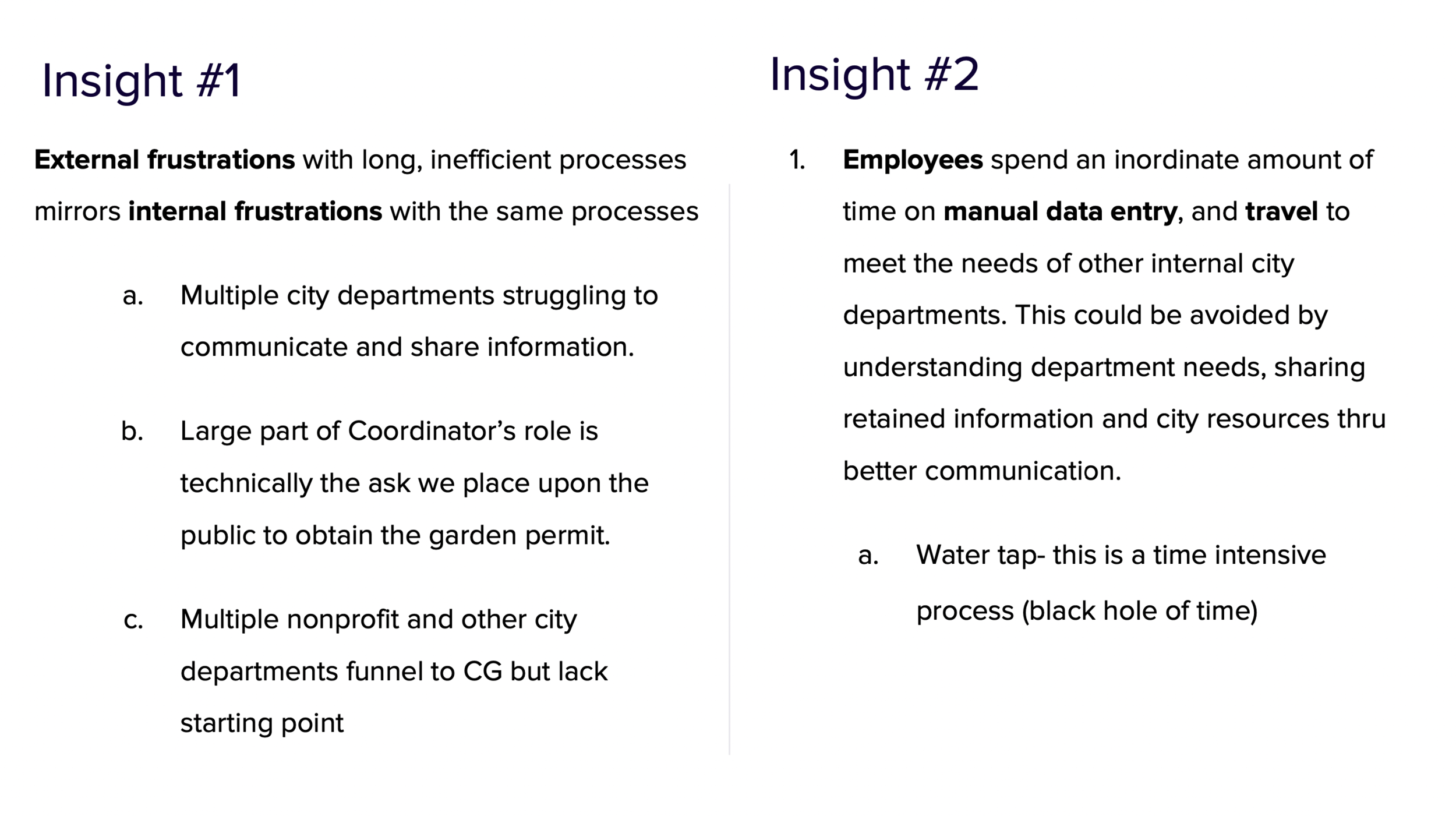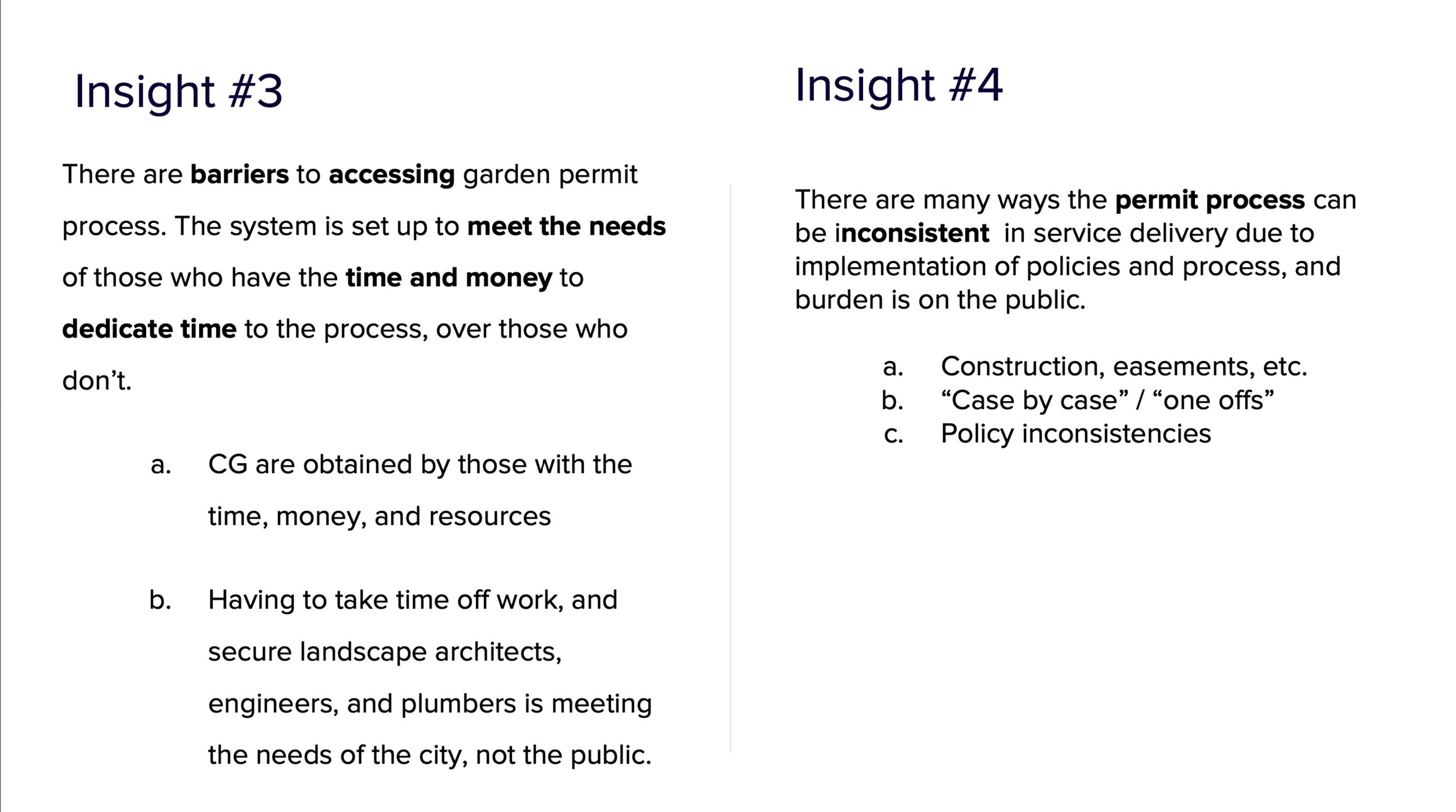Over the course of six weeks, our office, in collaboration with the City of Austin Parks Department, worked to understand the current pain points and obstacles the community as well as other city partners face to establish a garden permit within the City of Austin. This involved, identifying challenges and pain points in the public's user experience, while uncovering opportunities and identifying tools to better assist the Garden Coordinator in shepherding perspective gardeners (across multiple departments needs). A second goal was to cultivate outreach and build community with existing gardeners while streamlining existing blockers established by other city department needs.
Website(s): Austin Parks Department Community Garden
Partner(s): City of Austin: Parks and Recreation, Real Estate Services, Water Utilities, Watershed, Neighborhood Partnering Program, Development Services Landscape Architect/Engineering and Sustainable Food Center
My role: Lead Service Designer-Research Plan, Workshop Templates/Facilitation, Interview Guides, Journey Map, Service Blueprint, Personas, Future State Solution(s)
Articles: Medium Article
Foundational Research: Community Health, Public Space, Connection and Empowerment
Since their origin in US cities at the end of the 19th century, the popularity of community gardens has tended to increase during periods of crisis, and as we face new challenges such as the rising rates of chronic health issues like obesity, heart disease, and depression, along with socioeconomic issues like high unemployment rates and increasing food insecurity, it makes sense that community garden initiatives are experiencing a nationwide resurgence.
While Community Gardens ability to improve food access alone, especially among lower-income and underserved communities, is proof of value, they are—and have always been—about much more than food. Community gardens are about building social ties, sharing skills and experience, learning about nature and culture, and taking proactive measures to improve our physical and mental well-being. Community gardens allow for the creation of social ties and build a greater feeling of community. These connections help reduce crime, empower residents and allow residents to feel safe in their neighborhoods and community.
Shared gardens have played a powerful role in helping communities who have experienced the traumas of displacement, such as new immigrants and refugees. For these populations, shared gardens can be a vehicle for re-establishing a sense of place, especially older ones, who are often isolated by language and poverty while experiencing depression and post-traumatic stress.
The City of Austin Community Gardens program began as a non-profit, founded by the YWCA in 1975. The project began as a four-acre pilot project with about 15 garden plots on East 51st Street. The enthusiasm for the Austin Community Gardens quickly spread and more land and funds were donated by the City of Austin for additional sites with water equipment and staff donated by Travis County.
In 2001 Austin Community Gardens merged with Sustainable Food Gardens. Since frequently worked together and had compatible missions, they merged to strengthen programs, integrate work and consolidate administrations. Sustainable Food Center continues to assist people to achieve food security by teaching them how to grow, cook and market foods grown in a sustainable and environmentally friendly way. Together programs and services target low-income, health-at-risk individuals and families and annually impact more than 7,000 children and adults.
The Problem
Different processes and systems had created an inequitable and unsustainable city permitting process. For example, the standard “community garden license agreement,” process was finalized by city legal in 2014, and has been used for Adelphi Acre Community Garden, Cherry Creek Community Garden, Patterson Park Community Garden and North Shoal Creek Community Garden. However since then,
The North Austin YMCA Community Garden’s license agreement is part of the overall YMCA license agreement to use City parkland.
The Festival Beach Community Garden has a Parkland Improvement Agreement that auto-renews every 5 years
Homewood Heights and Blackshear were established on Watershed land before the annual license agreement requirement.
According to a City Council Ordinance, all new community gardens are required to have a license agreement though Parks, however they have continued to support small program gardens for senior centers/rec centers without having an agreement.
New community gardens are also now required to have a nonprofit sponsor to act as fiscal agent and to hold the liability insurance, and so the signatories of the license agreement are the City of Austin Office of Real Estate Services and the nonprofit sponsor (on behalf of the community garden).
At start of project for a new garden to get this license agreement though, they have to start with a City of Austin garden permit applications. This program had one employee whose job was to “Shepard,” new permit applications through the messy process, that involved multiple city department needs. All of which became blockers to the citizens applying for gardens, with some applications taking up to five years.
Foundational Research: Comparative Review & Current Service Status
Conducted a review of other cities community gardens permitting process. Noted size, community usage, and avenues of access. Along the way reviewing city requests to meet citizens needs. During this time I also research how the city of Austin feels about the community garden program. To do this I reviewed social media sites involving the community gardening community.
Discovery: Stakeholder / User Interviews
Interviews Conducted
Takeaway Example(s)
Discovery: Workshopping
Identifying Patterns and Opportunities
After we had collected data about current process and experiences, we regroup to analyse it. In this case, we used tools to make sense of the data we collected. One way is understanding our users and their needs. During interviews and journey mapping a lot of overlapping needs and problems arose as well, solutions and ideas.
Along with these, we generated user archetypes, or personas, and insights that hone in on the pain points and identify opportunities for departments as they use information to deliver the service. These insights and findings later framed our ideation around solutions to address these pain points, and opportunities.
Another is the journey map or service blueprint. These trace the experience of a user as they interact with a service or tool across time and touch points. Below is a digitized service blueprint showing the journey of the permit application, highlighting pain pints and blockers on the front end and back.
Theming and Pattern: Identified System Needs and Insights
Next Steps
